Email Address enquiry@pellet-richi.com
Phone/Whatsapp 0086-13838389622
Email Address enquiry@pellet-richi.com
Phone/Whatsapp 0086-13838389622
A cattle feed mill is a production system for producing various types of cattle feed, usually covering stages such as crushing, mixing, pelletizing, cooling, screening, and packaging. The cattle feed plant solutions we can provide can be used to process pellet feed, concentrated feed, ruminant feed, grass feed, straw feed, premix feed, etc.
Get Price & SupportWe can design cattle feed plant project planning schemes according to different needs of customers, and provide 3D renderings; design solutions according to different requirements of customers, different materials, and different sites; RICHI has a design, manufacturing and installation professional with 25 years of practical experience technical team, providing door-to-door installation services.
Regardless of pre-sales or after-sales technical support, we provide customer-satisfied services at any time, and accept customer technical inquiries, on-site services, equipment maintenance, production failures, and service complaints 24 hours a day. In terms of service quality control, we insist on lifelong service, Richi Machinery is trustworthy.
If you want to build an animal feed mill, you must consider the following at the initial stage:
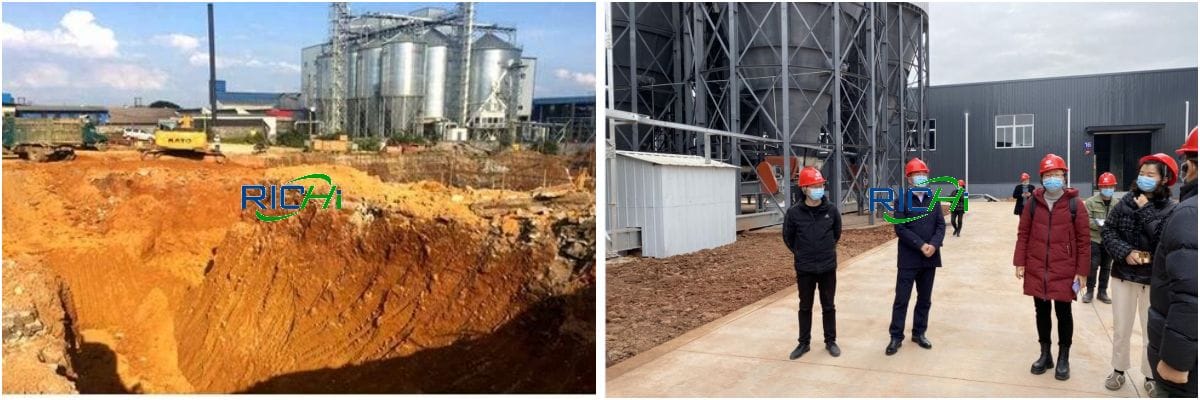
If you have any questions about the animal cattle livestock feed mill factory start, you can send email or leave a message online, our team will reply to you as soon as possible.
01 Provide cattle feed making plants with 1-160t/h standard technology and personalized technology, general layout planning (including civil engineering planning and design), overall plant appearance and roads, logistics, greening layout, main workshop, warehouse, auxiliary building, office, The design scheme of the whole plant such as the living area, canteen, dormitory, boiler room, toilet, etc., and the 3D design drawing of the main workshop;
02 Provide comprehensive solutions for production, operation, quality, cost and other issues and comprehensive training in management, technology and operation for feed factories;
03 To reduce costs, improve quality, and create value for feed mills, provide technical solutions for the following value-added services.
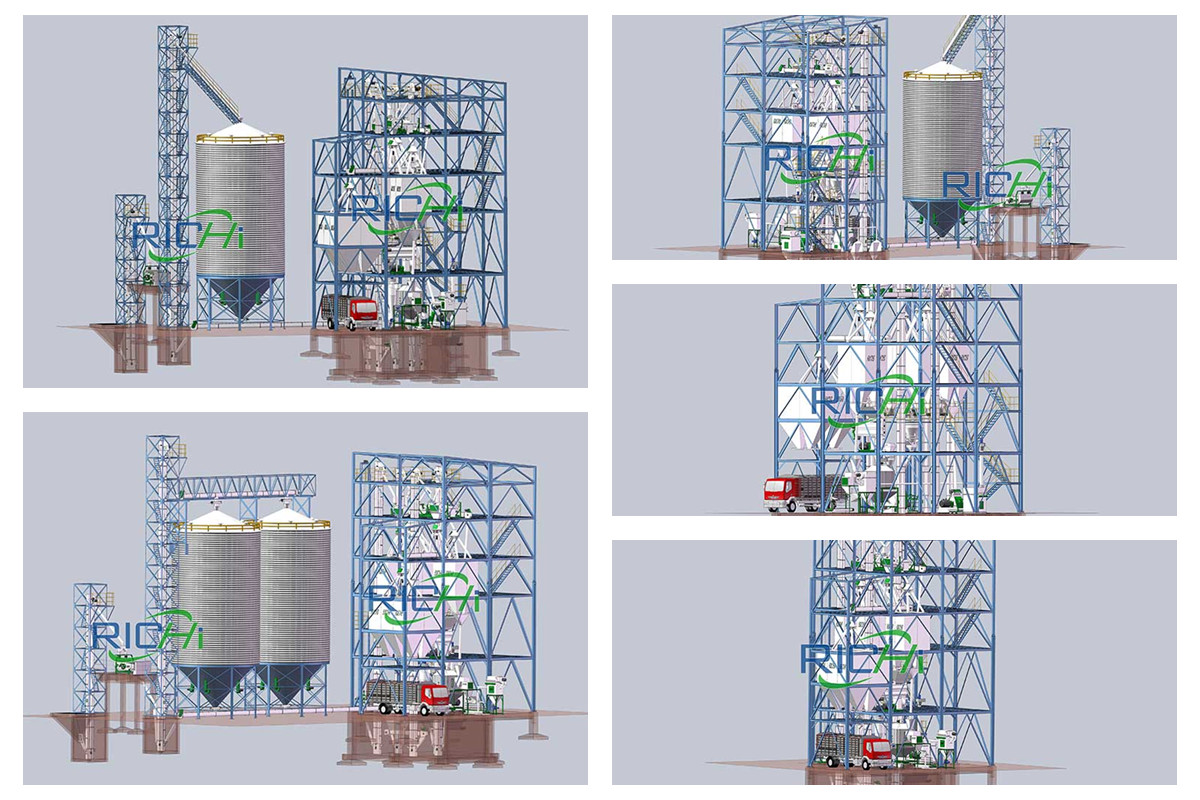
Features: It adopts building block modular design, which is convenient for disassembly, transportation and installation; low investment, quick effect, compact structure, small footprint, low requirements for workshops, small infrastructure investment, and directional design according to needs. It is especially suitable for small feed mills and farms of various sizes.
Raw materials for conventional cattle feed: raw materials for conventional livestock and poultry feed include corn, wheat, barley, oats, sorghum, soybean, soybean meal, fish meal, amino acid, miscellaneous meal, whey powder, oil, meat and bone meal, grains, feed additives, etc. variety of feed ingredients.
Raw materials of ruminant grass-containing cattle feed: corn, wheat, barley, soybean meal and other grain raw materials (similar to livestock and poultry feed), and also contain crude fiber raw materials such as grass, hay and straw.
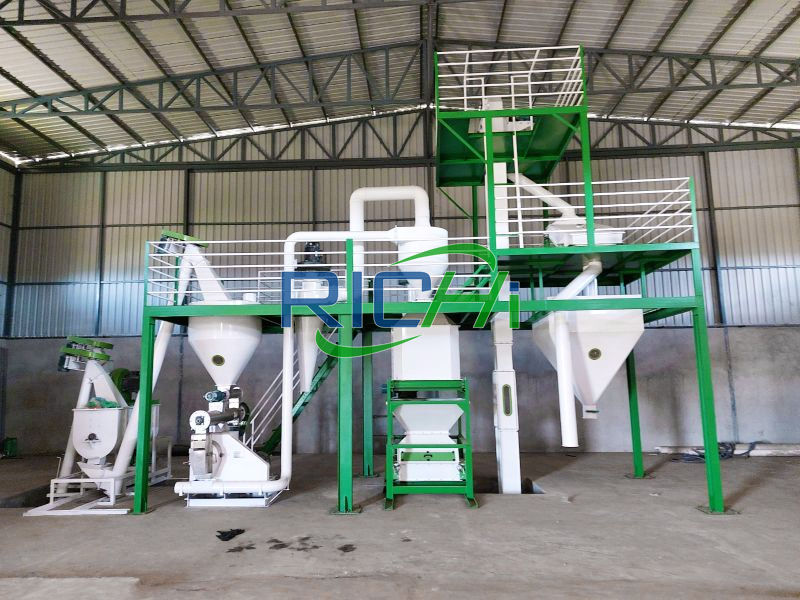
Using manual weighing and batching, the designed total production capacity is 1.5-2T/H for finished powder products and 0.8-1T/H for finished pellet products. The raw materials are manually pre-cleaned and pre-weighed. The raw materials that need to be crushed are directly put into the feed pulverizer in batches, and the cattle feed hammer mill adopts manual feeding. The production line is then mixed by a feed mixer.
The mixed material can directly enter the finished product warehouse as a finished powder product, or enter the granulation section for granulation cooling processing, and finally use manual weighing and packaging. The total power of the unit equipment is about 75KW; the unit occupies an area of about 10*5.5*7m; it needs to be equipped with a 0.2T boiler. (Related post: Indonesia 3-5T/H Ruminant Feed Plant For Sheep And Cattle Pellets Production)
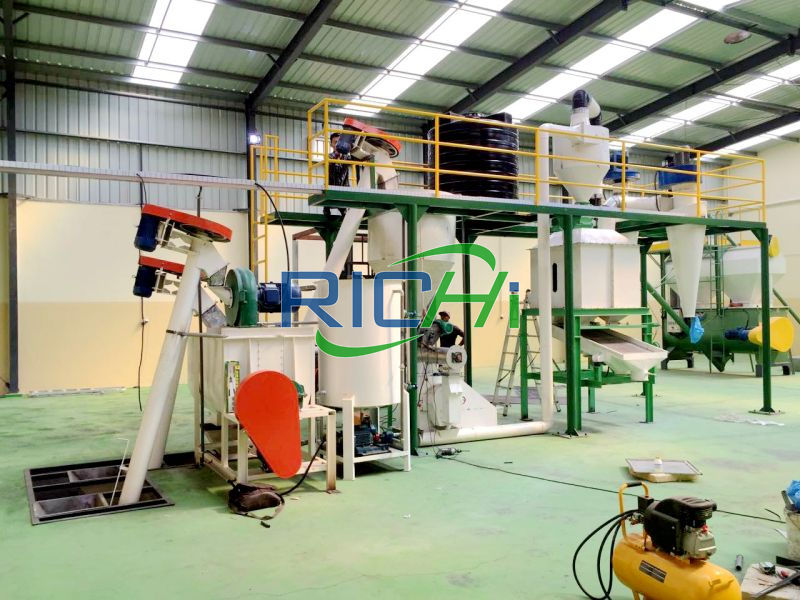
Using manual weighing and batching, the designed total production capacity is 2-3T/H for finished powder and 1-1.5T/H for finished pellets. The raw materials need to be weighed in advance, and then fed into the production line from two different feeding ports.
The raw materials to be crushed are fed into the pulverizer from the granular material feeding port in batches. The powder that needs to be crushed is pre-weighed and enters the production line from the powder feeding port, and then mixed by a mixer. The mixed material can directly enter the finished product warehouse as a powder product, or enter the granulation section for granulation and cooling processing , and finally use manual weighing and packaging. The total power of the unit equipment is about: 87KW; the unit occupies an area of about: 12*6*8m; it needs to be equipped with a 0.2T boiler.
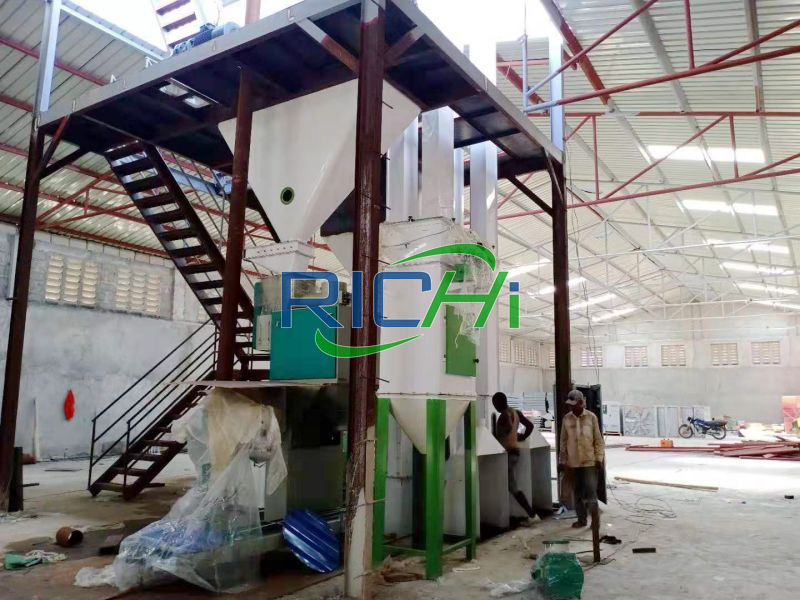
Manual weighing of ingredients is adopted, and the designed total production capacity is 2-3T/H for finished powder products and 2-3T/H for finished pellet products. The raw materials need to be weighed in advance, and then fed into the production line from two different feeding ports. The raw materials to be crushed are fed into the pulverizer from the granular material feeding port in batches. The powder that needs to be crushed is pre-weighed and enters the production line from the powder feeding port, and then mixed by a mixer.
The mixed material can directly enter the finished product warehouse as a powder product, or enter the granulation section for granulation and cooling processing , and finally use manual weighing and packaging. The total power of the unit equipment is about: 117KW; the unit occupies an area of about: 12*6*11m; it needs to be equipped with a 0.3T boiler.
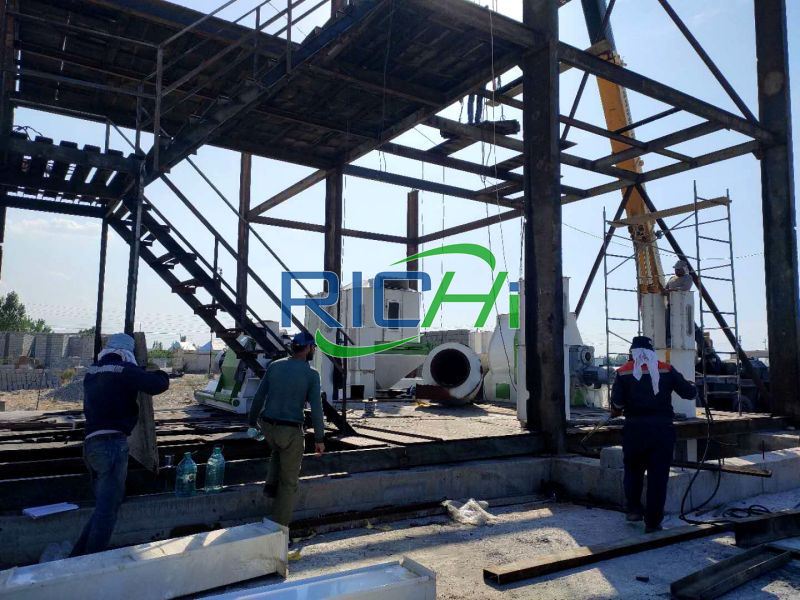
Manual weighing of ingredients is adopted, and the designed total production capacity is 3-4T/H for finished powder products and 2-3T/H for finished pellet products. The raw materials need to be weighed in advance, and then fed into the production line from two different feeding ports. (Related case: Hong Kong 3-4T/H Cattle Feed Plant)
The raw materials to be crushed are fed into the pulverizer from the granular material feeding port in batches. The powder that needs to be crushed is pre-weighed and enters the production line from the powder feeding port, and then mixed by a mixer. The mixed material can directly enter the finished product warehouse as a powder product, or enter the granulation section for granulation and cooling processing , and finally use manual weighing and packaging. The total power of the unit equipment is about: 131KW; the unit occupies an area of about: 12*6*11m; it needs to be equipped with a 0.3T boiler.
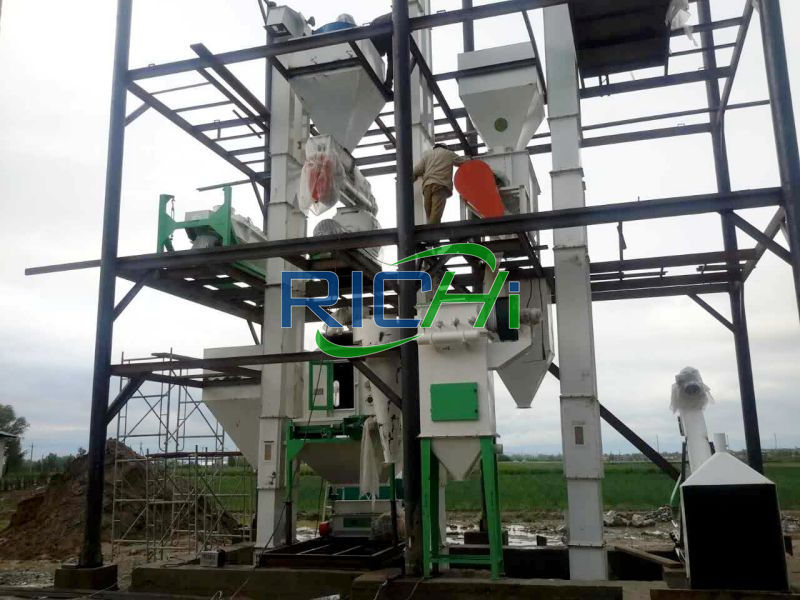
Using manual weighing and batching, the designed total production capacity is 5-6T/H for finished powder and 4-5T/H for finished pellets. The raw materials need to be weighed in advance, and then fed into the feed production line from two different feeding ports. The raw materials to be crushed are fed into the cattle feed grinder from the pellet feeding port in batches.
The cattle feed crusher is fed by a screw conveyor and does not need to be crushed. The powder is pre-weighed and enters the cattle feed production line from the powder feeding port, and then mixed by a mixer. The mixed material can directly enter the finished product warehouse as a powder product, or enter the granulation section for granulation cooling processing, and finally Manual measurement and weighing are used for packaging. The total power of the unit equipment is about: 172KW; the unit occupies an area of about: 13*6*11m; it needs to be equipped with a 0.5T boiler.
RICHI designs and manufactures all key processing machines and offers large complete feed pelleting plant solutions to the global animal feed and livestock industry.
The design output of double-line SZLH420 cattle feed is 20T/H, using two crushing lines, one ingredient mixing line, two granulating lines and two packing lines. The total power of the equipment is about: 725KW; the construction area of the production area is about: 16.5*16.5*28m; supporting 2T boiler. The whole cattle feed line is compact in design, reasonable in structure, meets environmental protection requirements, and can be designed according to customer requirements.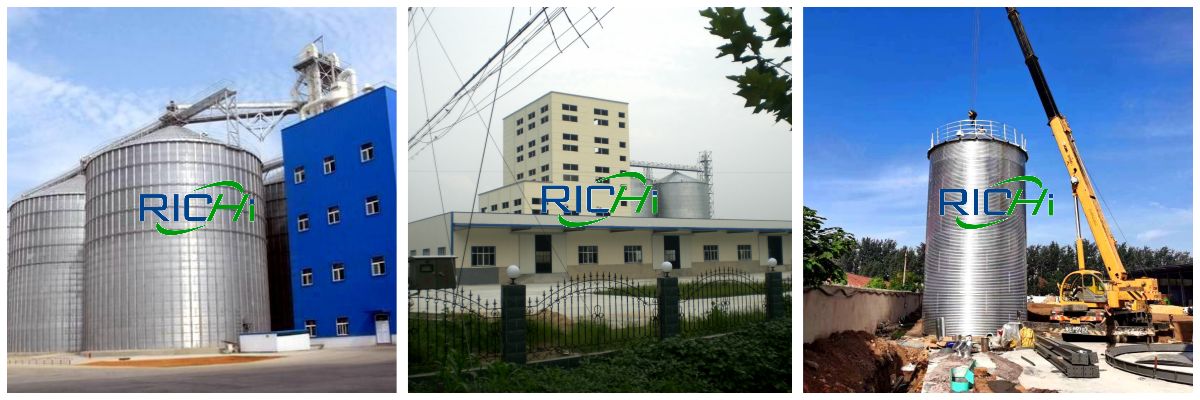
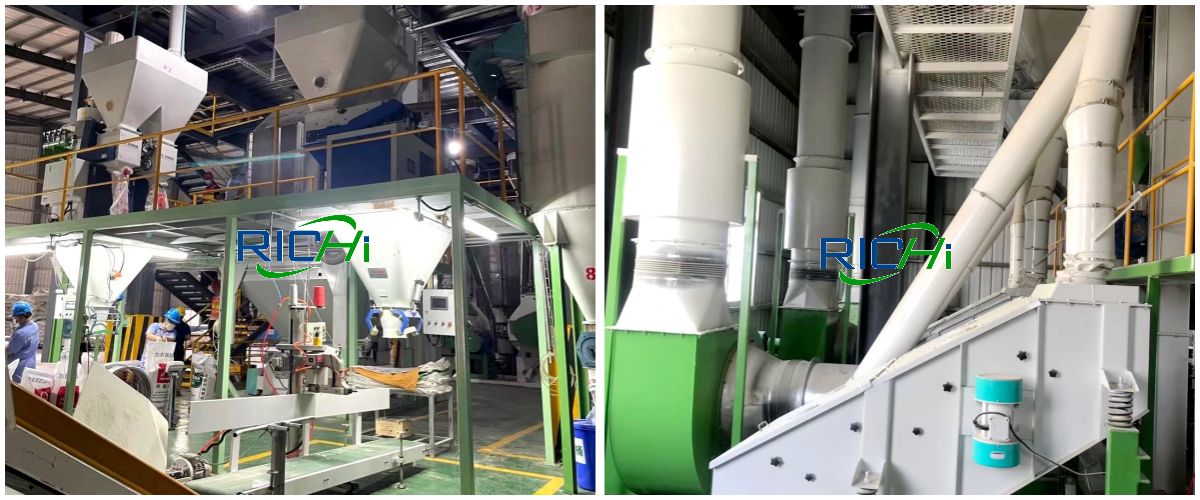
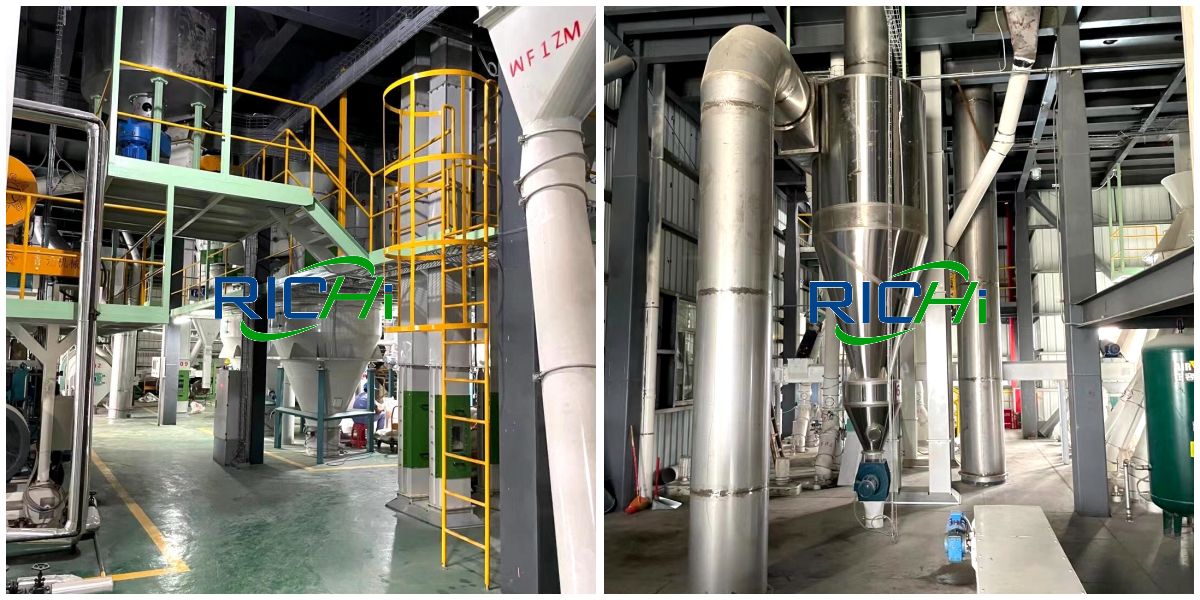
Ruminant feed is characterized by coarse crushing fineness (4-8mm sieve aperture), low aging and tempering requirements (single-layer conditioner is used in the cattle feeed granulator), and large particle diameter of the finished product (particle diameter is about 4-10mm). The design output of double-line SZLH420 ruminant cattle feed production plant is 20-30T/H, using two crushing lines, one ingredient mixing line, two feed pelletizing lines and two packing lines. (Related case: Saudi Arabia 15-16T/H poultry and cattle feed plant)
The total power of the cattle feed equipment is about: 700KW; the construction area of the production area is about: 21*17.5*28m; supporting 2T boiler. The whole line is compact in design, reasonable in structure, meets environmental protection requirements, and can be designed according to customer requirements.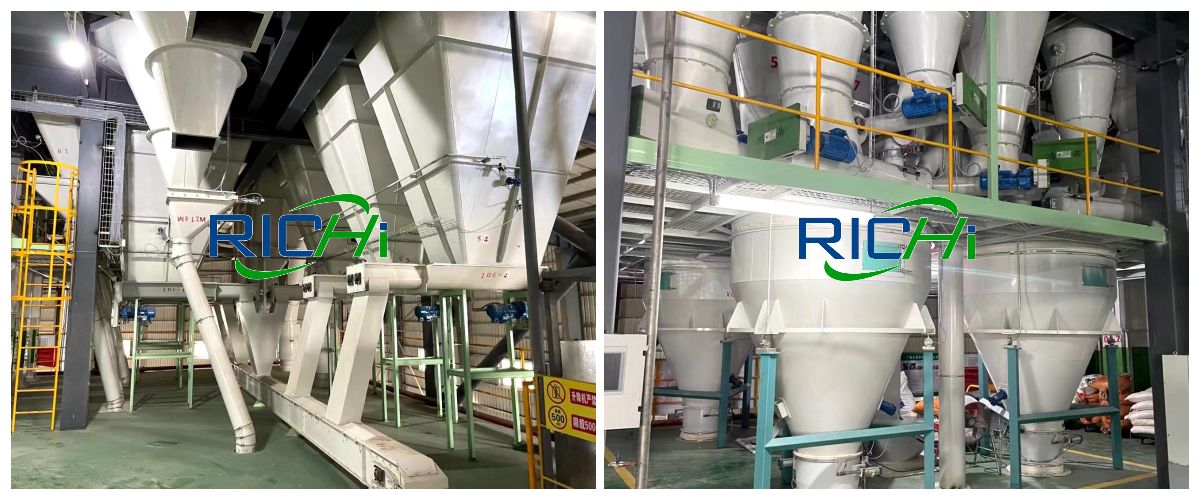
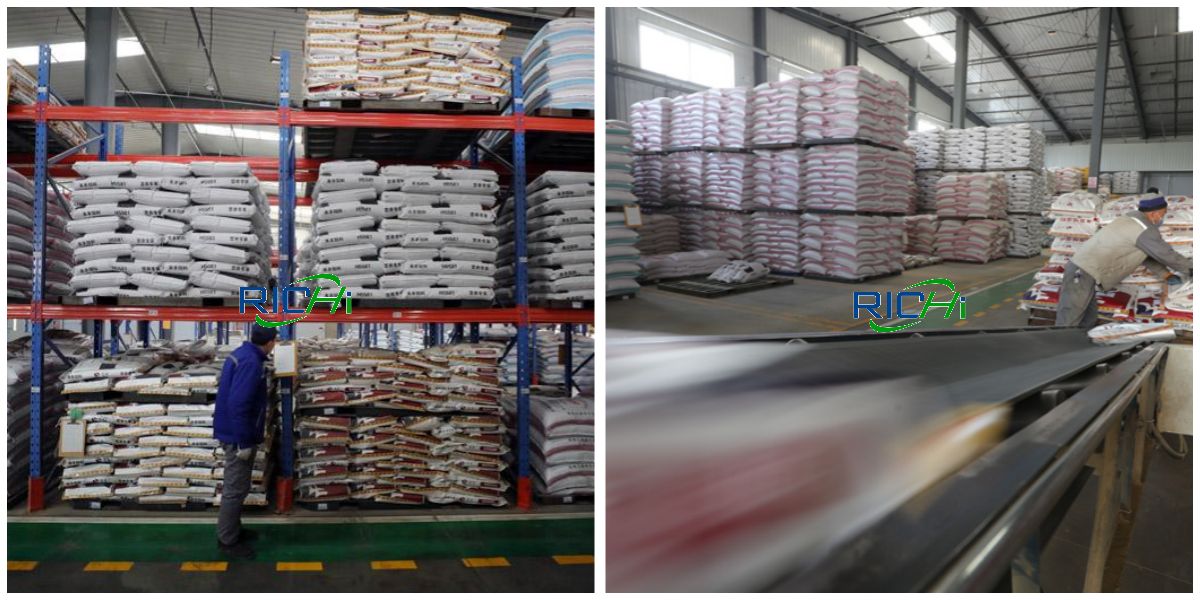
The third-line SZLH678 cattle feed pellet plant is designed to produce 50-60 tons per hour, using three crushing lines, two ingredient mixing lines, three granulating lines and three packaging lines. The total power of the equipment is about: 1670KW, the supporting boiler is 4T, and the construction area of the production area is about: 22.5*18*29.5m. The whole cattle feed line is compact in design, reasonable in structure, meets environmental protection requirements, and can be designed according to customer requirements. (Related case: South Africa 10T/H Automatic Cattle Feed Plant)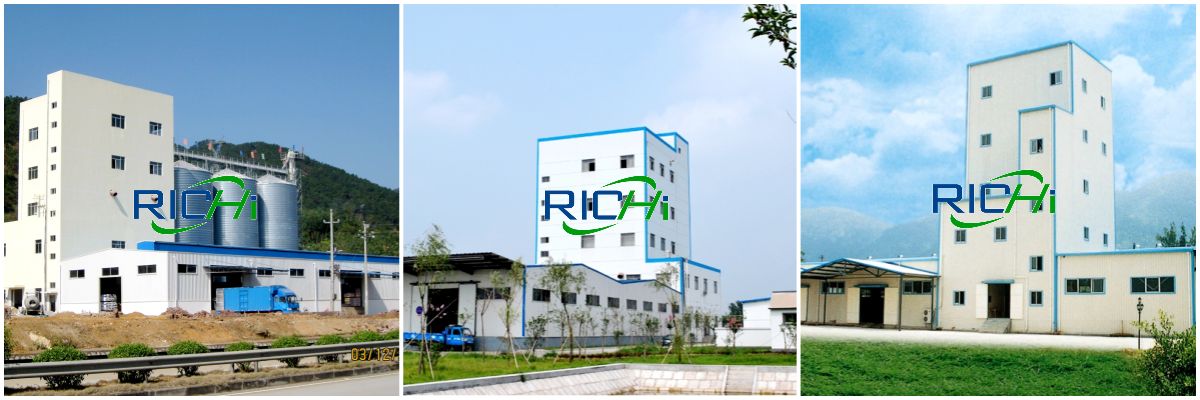
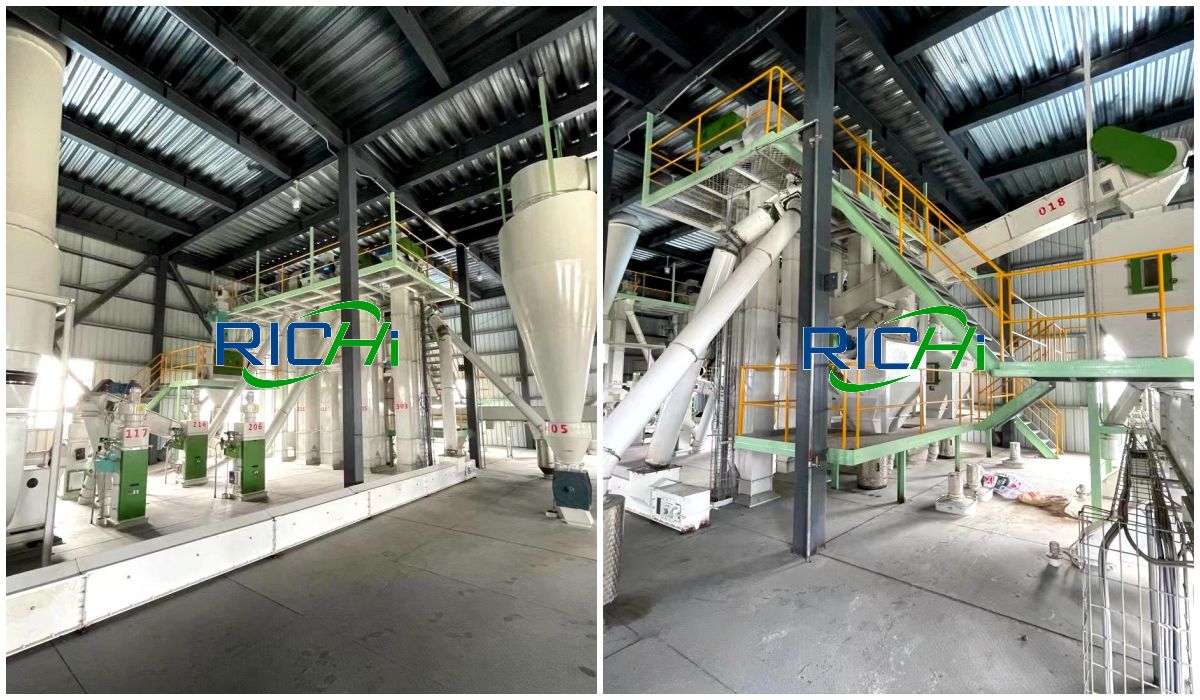
If you are interested in our company and our cattle feed mill solutions and cattle feed equipment, welcome to visit our company, you can also call us for consultation, we will provide you with cattle feed equipment details, equipment applications, selection quotations and other information! It is our honor to solve your problems! Please leave your needs and detailed information in the form below, we will arrange staff to contact you as soon as possible!
If you want to build a feed mill factory, the feed manufacturing process and feed mill equipment will always be the core content. Please note that each of our feed mills is customized, because the customer's plant, local height limit, customer's raw materials, feed formula, etc. are different, so if you need to build a cattle feed mill factory, please contact us directly for details.
If you are processing powder feed or premix, then pelleting and subsequent production processes are not required, and you can enter the packaging section after mixing.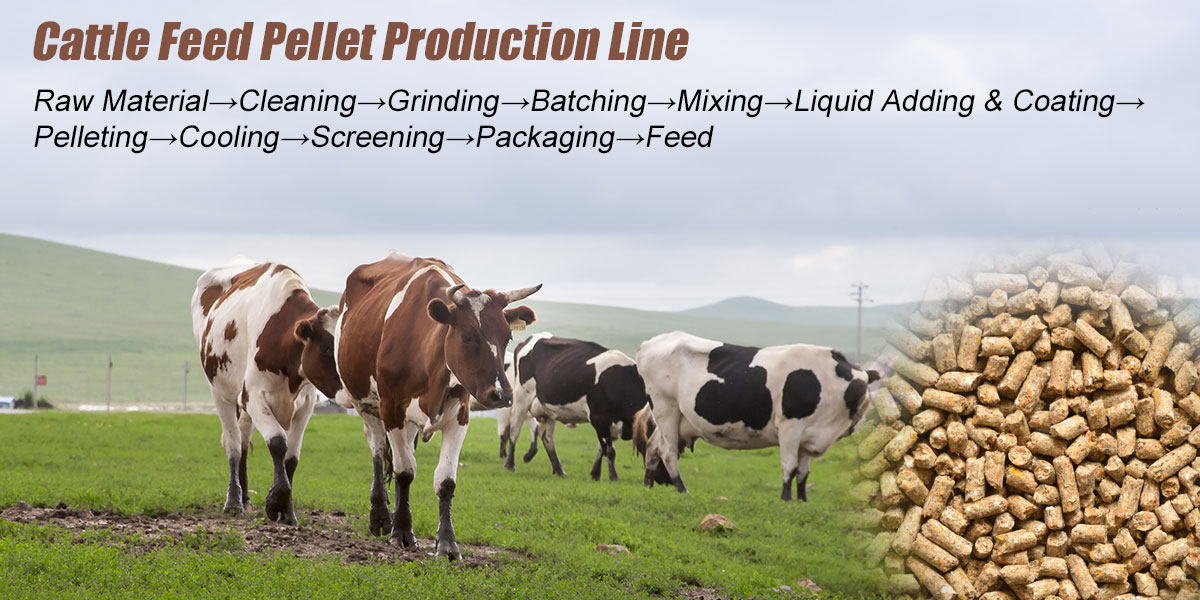
01
Receipt of raw materials
①Receipt of bulk raw materials: when transported by bulk cars or trains, the raw materials will be unloaded to the unloading pit after being weighed by a floor scale.
②Receipt of packaging materials: divided into two types: manual handling and mechanical reception.
③Receipt of liquid raw materials: bottled and poked can be directly transported and stored manually.
02
Cleaning of raw materials
Remove impurities (mud, stones, hemp rope, iron nails, iron nuggets, etc.) in the raw materials to ensure the quality of feed products and ensure that the subsequent equipment of the process is free from failure or damage.
03
Crushing of feed ingredients
The purpose of crushing is to increase the specific surface area of the feed, increase the utilization rate of the animal's feed, reduce the energy consumption of the animal's chewing during the feeding process, and help increase the feed reward. The crushed raw materials are easy to mature in the pelleting and conditioning stage, which improves the quality of subsequent processes and improves work efficiency. The technological process of feed crushing is determined according to the required particle size, feed variety and other conditions.
04
Feed ingredients
The process of feeding and weighing materials is based on the requirements of the preset feed formula and adopts a specific ingredient metering system to measure different feed ingredients. The formulated materials are sent to the mixing equipment for mixing and mixing to produce a compound feed whose nutritional content and mixing uniformity meet the product standards. The feed ingredient metering system refers to a circulatory system centered on the ingredient scale, including ingredient bins, feeders, unloading mechanisms, etc., to realize the supply, weighing and discharge of materials.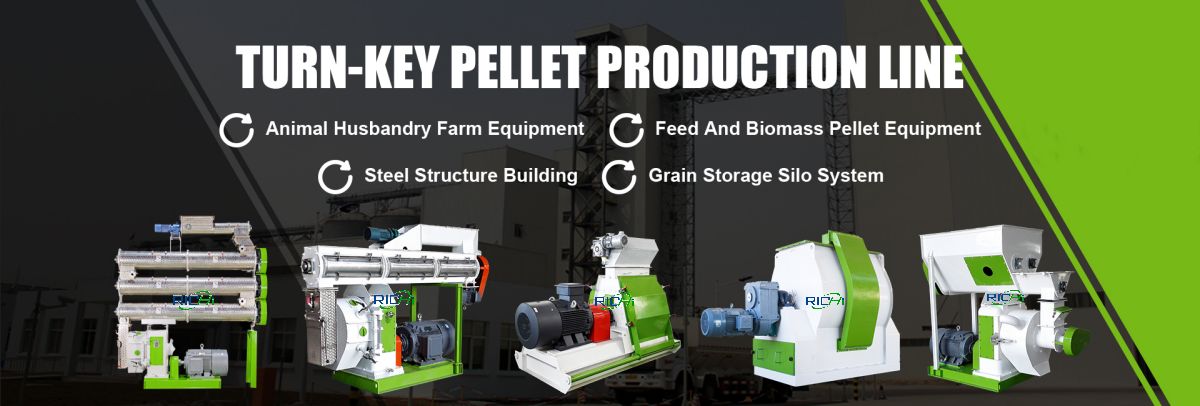
05
Mixing of feed
In cattle feed mill production, the working condition of the main mixer not only determines the quality of the product, but also plays a decisive role in the production capacity of the production line. Therefore, it is known as the "heart" of the feed factory. The mixing process refers to the process method and process of weighing the ingredients in the feed formula and then entering the mixer for uniform mixing processing.
The requirements for the mixing section are short mixing period, high mixing quality, fast discharging, low residual rate, good airtightness, and no spilled dust. The production capacity of the mixer determines the production scale of the feed factory, so the capacity of the mixer is selected according to the cattle feed production scale.
06
Pelleting of feed
The purpose of pelleting is to make finely divided, dust-prone, poorly palatable and difficult-to-ship feed into pellets using the heat, moisture and pressure during the pelleting process. Compared with powdered feed, pelleted feed can improve feed digestibility and reduce animal picky eating, avoid automatic grading of feed ingredients, reduce environmental pollution, kill salmonella in animal feed, and make storage and transportation more economical. After granulation, the bulk density of the powder will generally increase by 40% to 100%.
07
Feed cooling
In the feed mill pelleting process, the high temperature and high humidity steam is introduced and the material is squeezed to generate a lot of heat, so that when the pellet feed comes out of the feed pelletizer machine, the water content reaches 16%-18%, and the temperature is as high as 75℃-85℃, under this condition, pellet feed is easy to deform and break, and it will also cause adhesion and mildew during storage. The moisture must be reduced to below 14%, and the temperature should be lower than 8 ℃ higher than air temperature. This requires feed cooling process.
08
Screening of feed
After the pellet feed is processed by the crumbling process, a part of powder clots and other unqualified materials will be produced. Therefore, the crumbled pellet feed needs to be sieved into products with neat pellets and uniform sizes. (In the pellet feed production process, in order to save power, increase output, and improve quality, materials are often first made into pellets of a certain size, and then crushed into qualified products according to the pellet size of livestock and poultry feeding. This crumbling section needs to be configured according to customer needs.
08
Packing of finished product
Put into the packing scale from the finished product warehouse and pack after weighing. During this process, the packing should be calibrated until it meets the standard of packing weight. If you want to build a feed factory to provide feed for your farm, not for commercial use, then there is no need to set up a packing section.
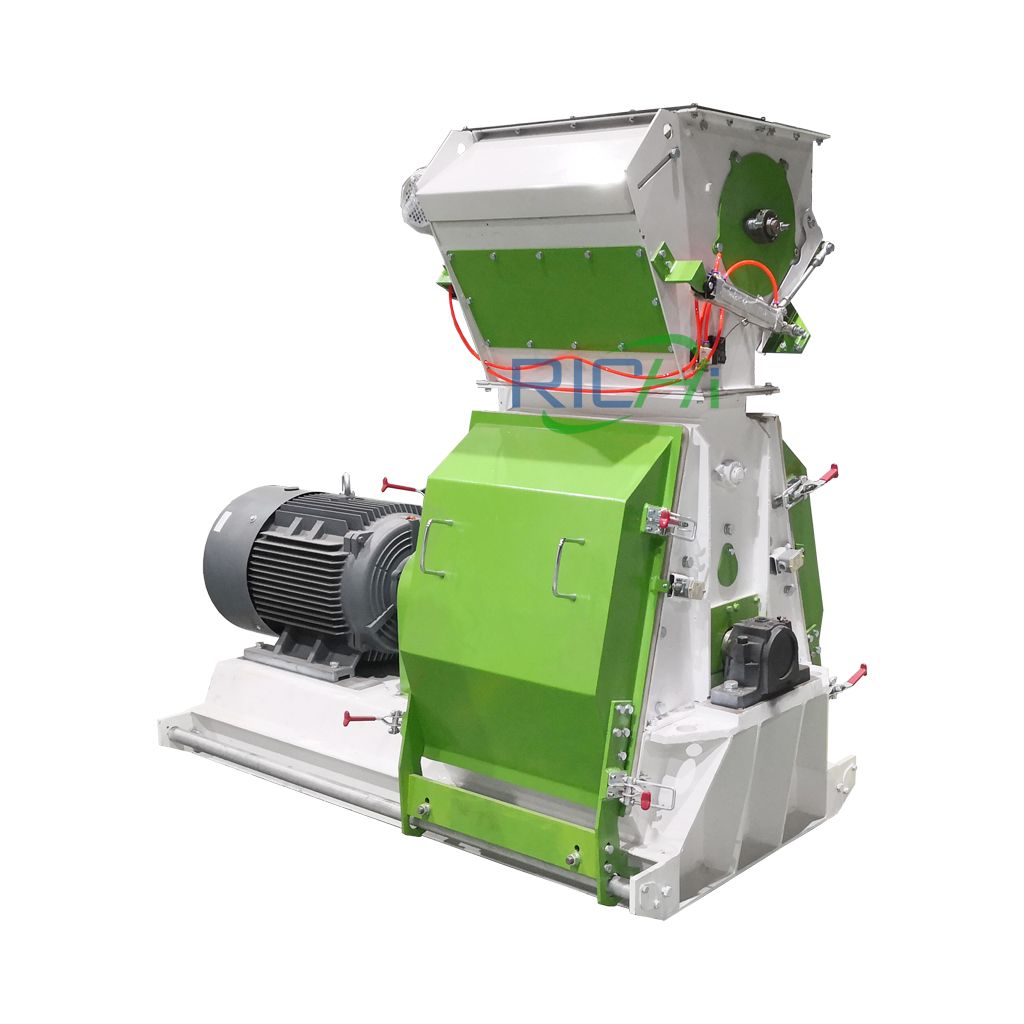
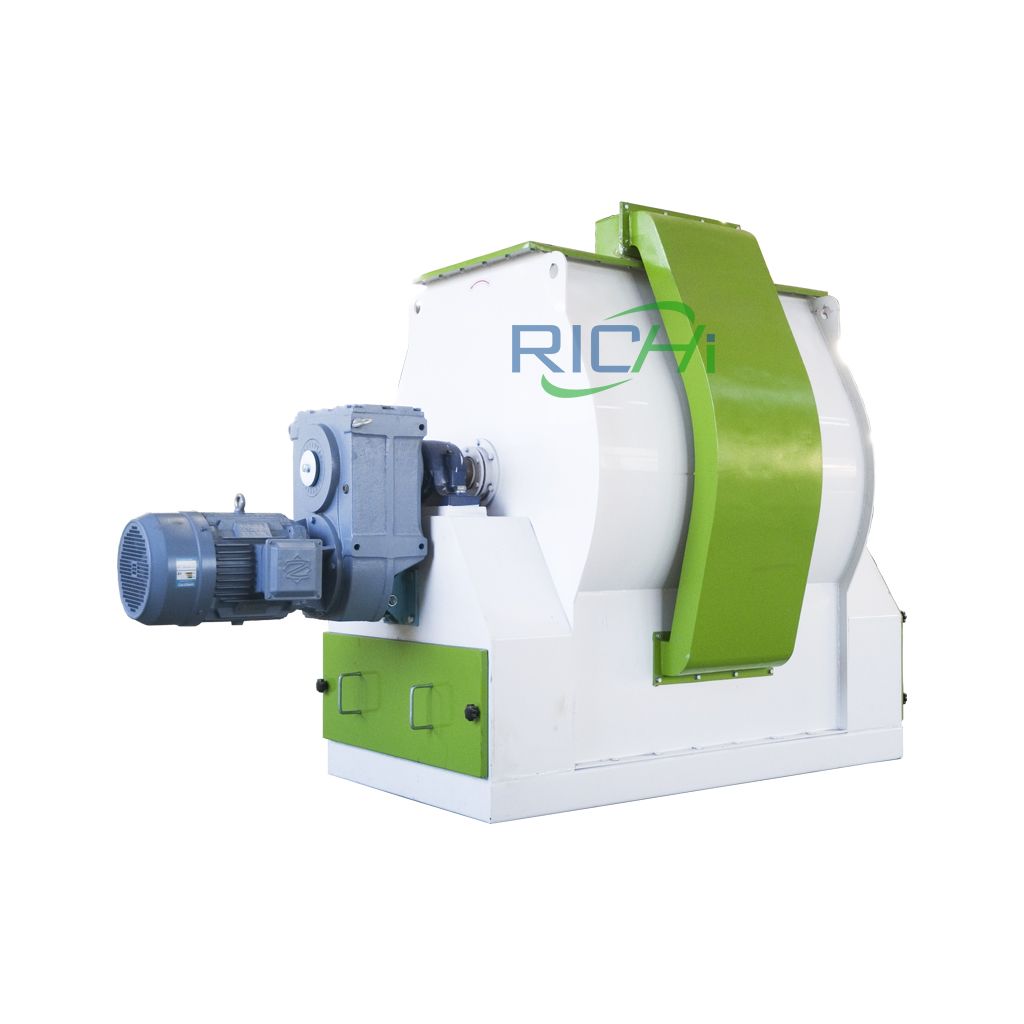
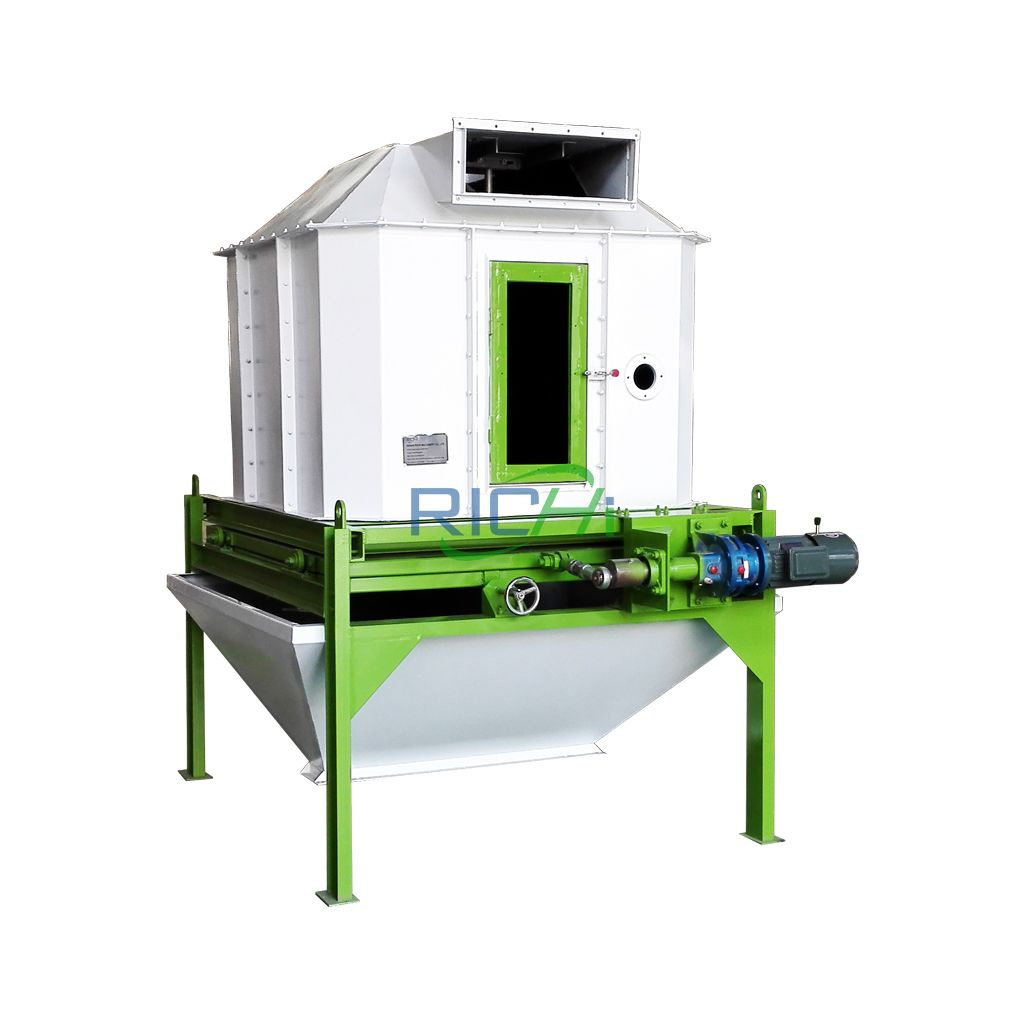
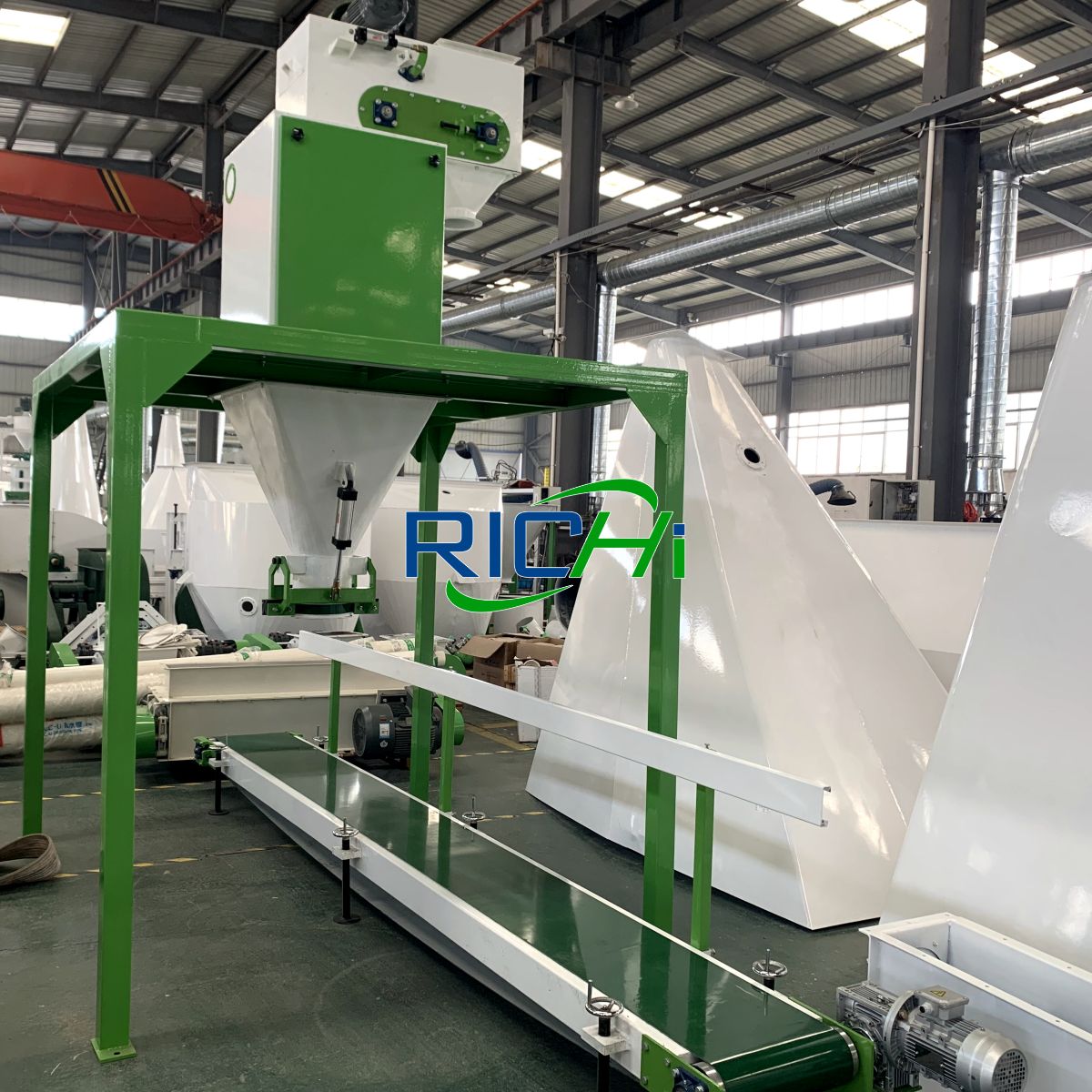
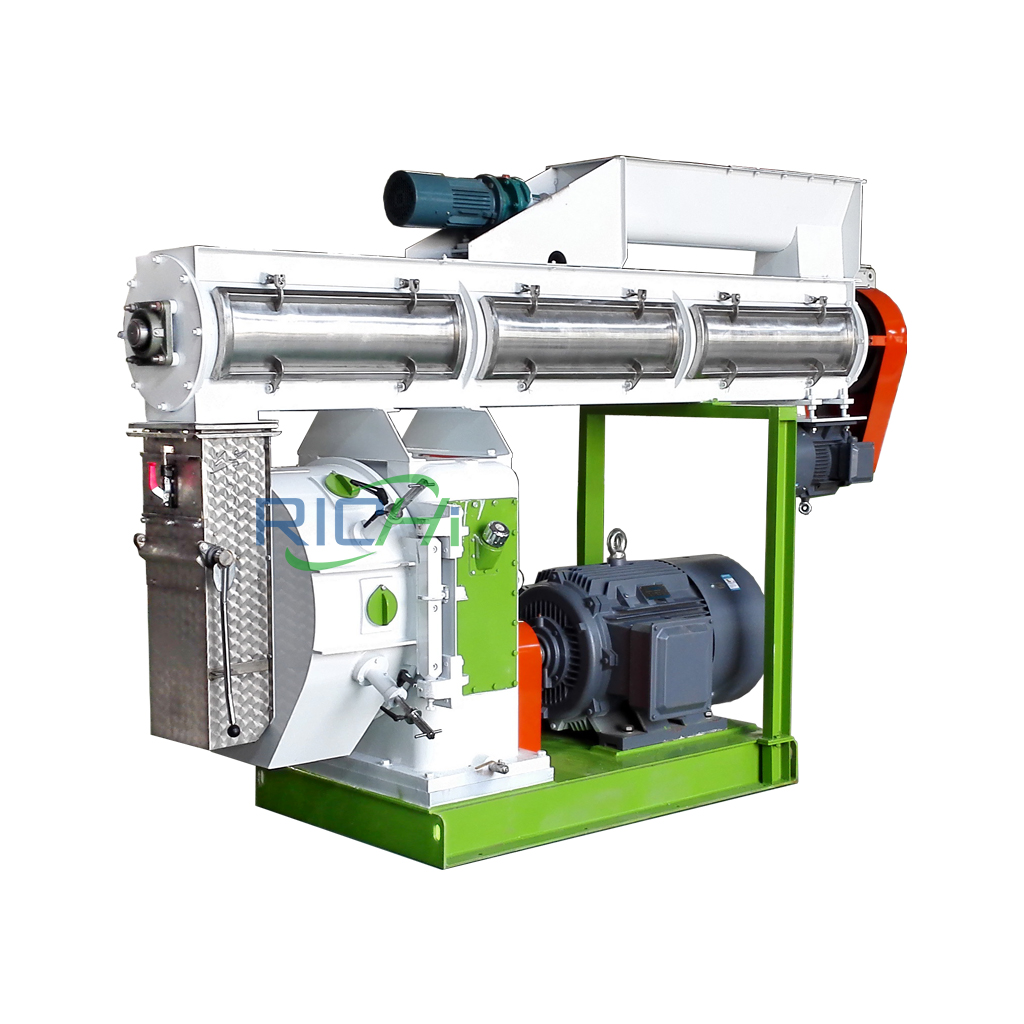
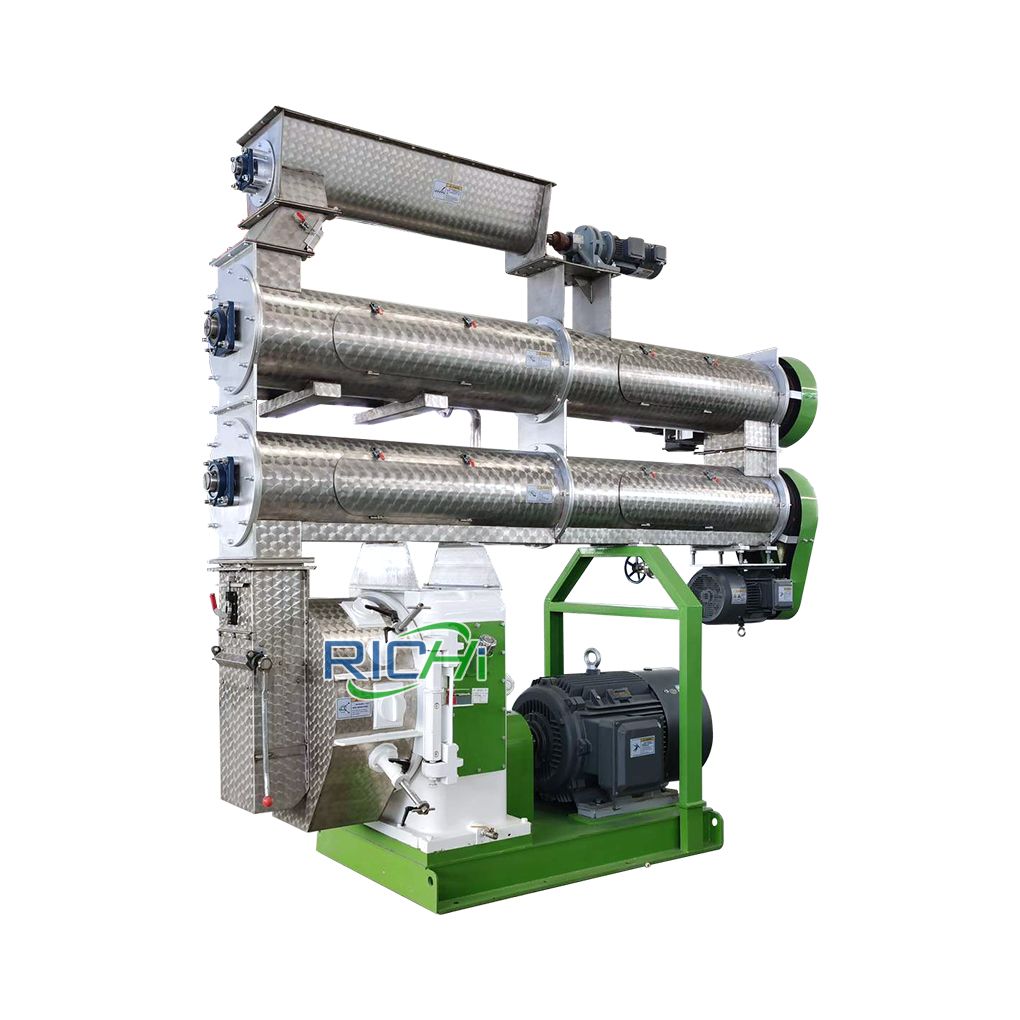
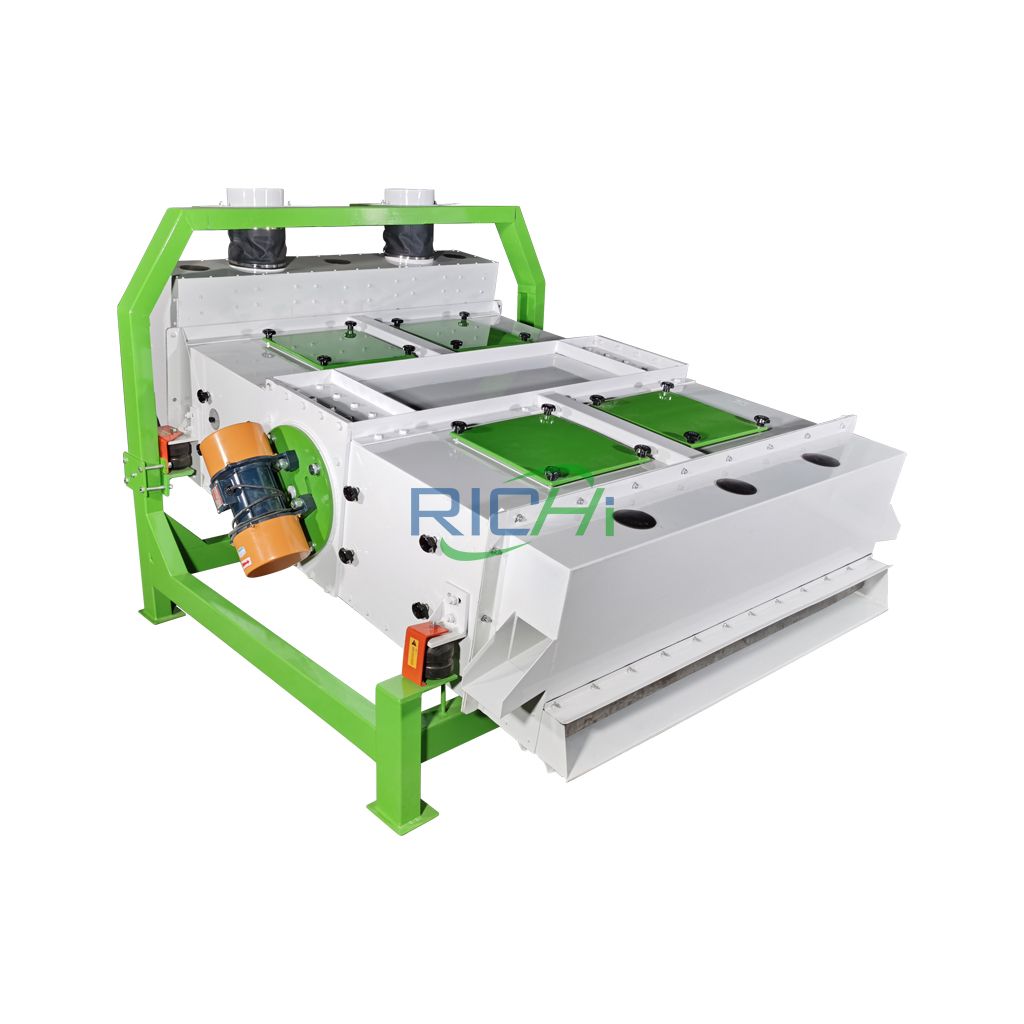
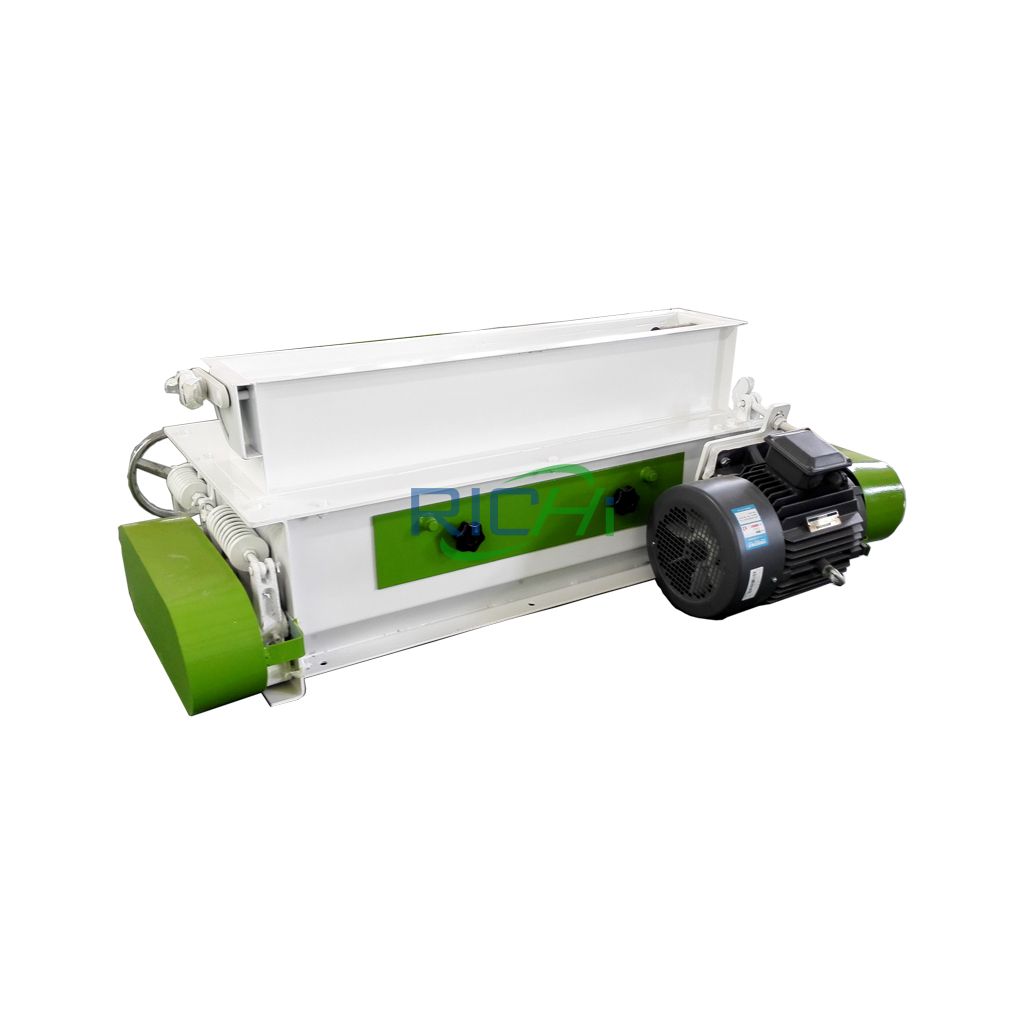
The cattle feed plant prices are determined according to the final customized feed mill technology, equipment, and service mode. Even if the output of the feed mills that different customers want to build is the same, the final feed mill is established based on various objective factors such as the customer's local feed mill regulations, engineering construction regulations, customer raw materials, feed making formulas, plant area, plant height, etc. It means that the feed factories price will be different. (Related post: Animal Feed Mill Machine)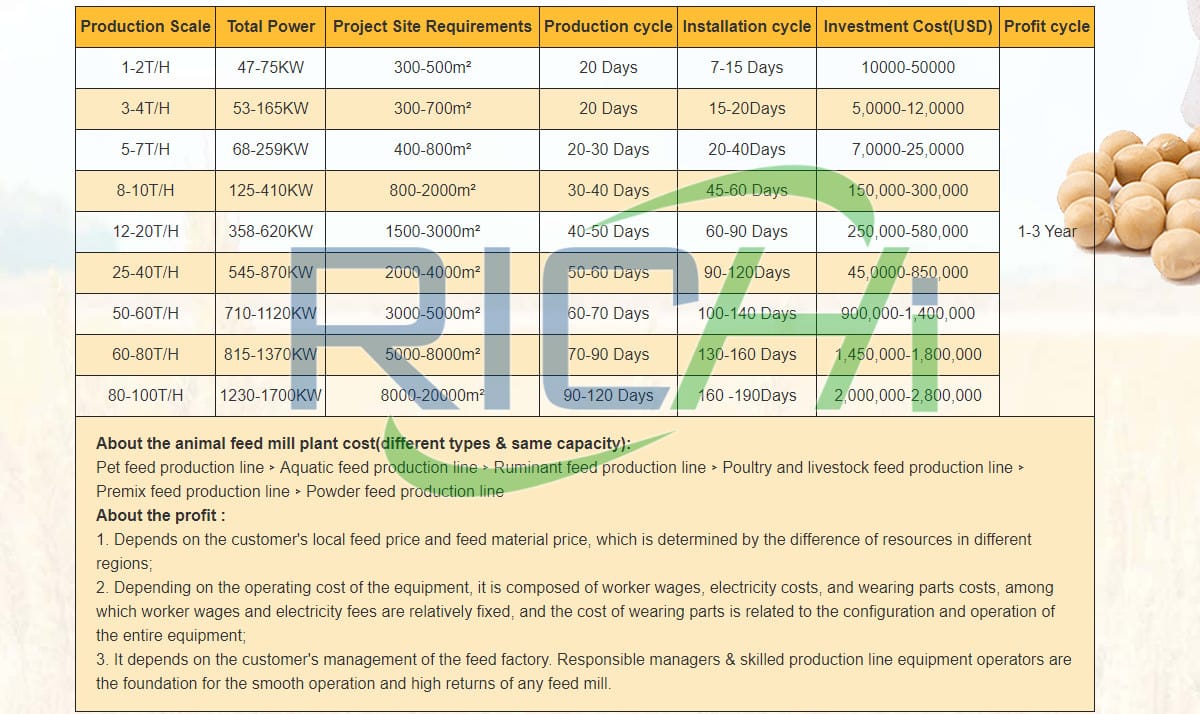
During its solid and stable development in the global market, Richi Machinery has gradually established a marketing network made up of more than 100 technical experts, covering 109 countries and regions so as to constantly provide its worldwide customers with one-stop, integrated, highly efficient, and convenient pre-sales, sales and after-sales services.
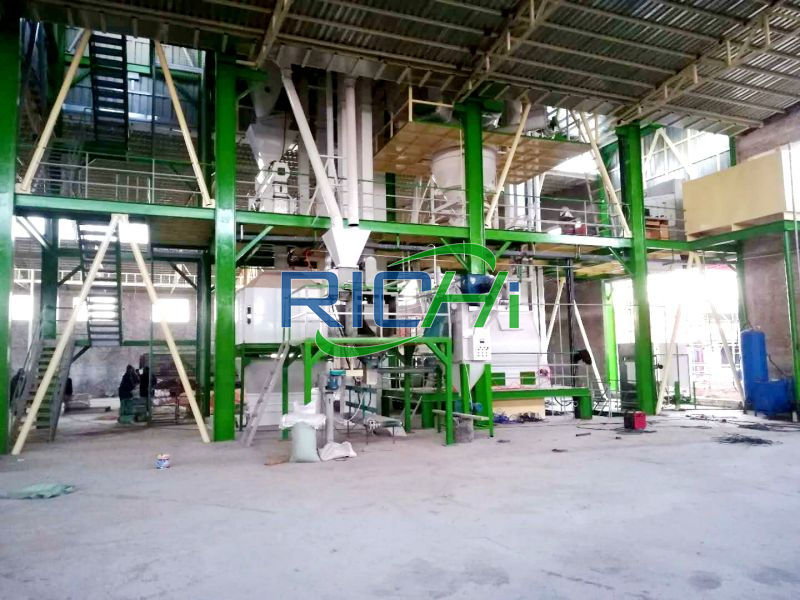
Feed mill scales: 10-12T/H
Feed type: pellet feed
Feed mill cost: FOB $250000-700000 USD
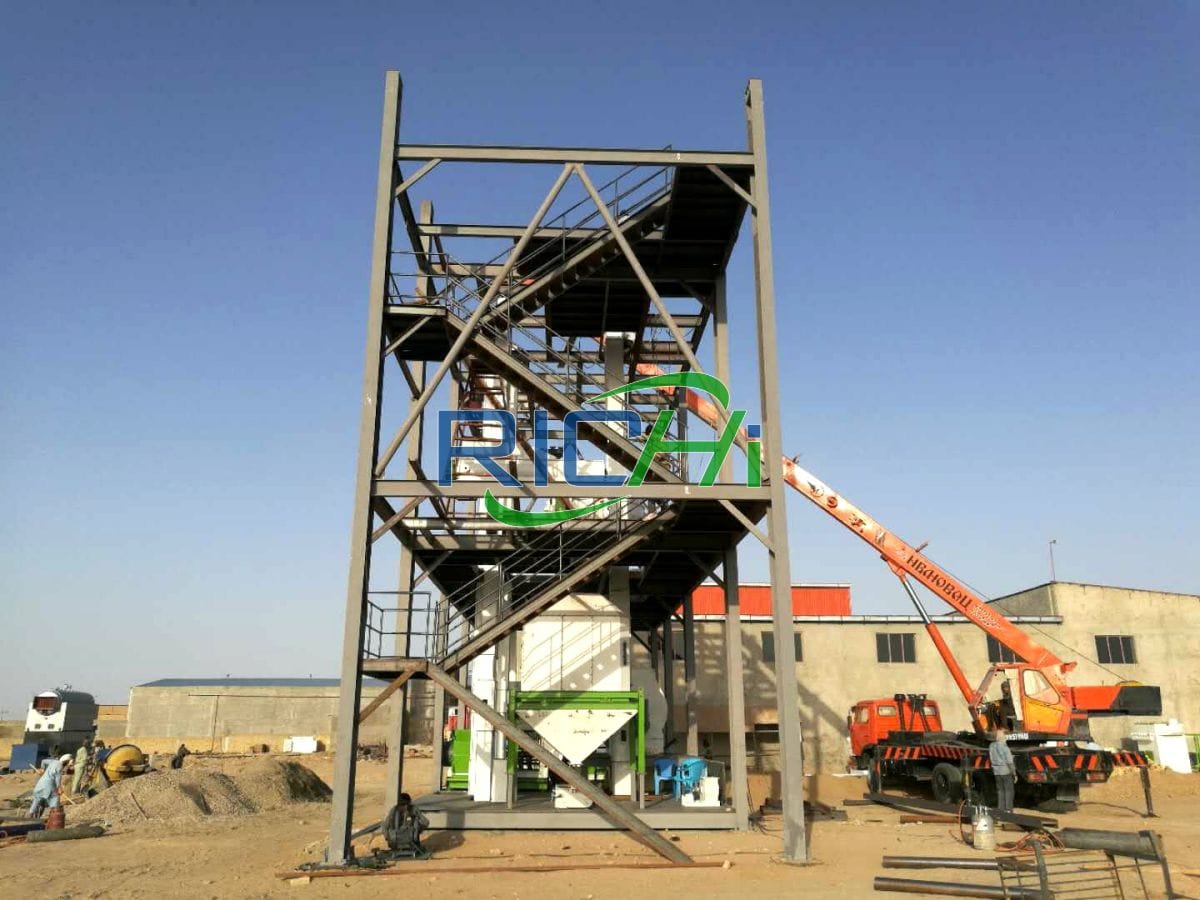
Feed mill scales: 10T/H
Feed type: pellet feed
Feed mill cost: FOB $150000-300000 USD
| Project | Feed Mill Cost |
|---|---|
| Automatic 25t/h cattle and pig feed mill project | 450,000 USD |
| Multi functional cattle chicken feed mill project with 80 tons per hour production capacity | 8,500,000 USD |
| Large automatic 50t/h dairy cow feed mill project | 1,000,000 USD |
| Commercial 4 ton per hour livestock cattle pig feed mill | 420000 USD |
| Complete full automatic 20 tons per hour cattle feed making plant project | 790,000USD |
| EPC project large capacity 60t/h cattle feed and 75t/h poultry feed mill | Around 2,800,000USD |
| 1-2T/H cattle feed line in Papua New Guinea | FOB $10000-50000 USD |
| 1-2T/H small capacity cattle feed production project In Australia | FOB $10000-50000 USD |
| 5-6T/H animal powder feed mill in Somalia | FOB 50000-250000 USD |
| 10-15T/H animal feed mill with silo system in Uzbekistan | FOB $150000-400000 USD |
Please feed free to contact Richi Machinery directly, our feed mill projects cover more than 100 countries around the world, I believe you will get the information you need.
The production management of the feed mill factory is the management of the four core contents of feed factory safety, product quality, production efficiency, and manufacturing cost. Among them, the improvement of production efficiency is the most important item for production management personnel. A significant increase in water retention rate has been found in feed mills. Quality improvement and efficiency improvement can save costs, reduce carbon emissions and increase production efficiency. This article focuses on some enlightenments for feed processing and hygiene.
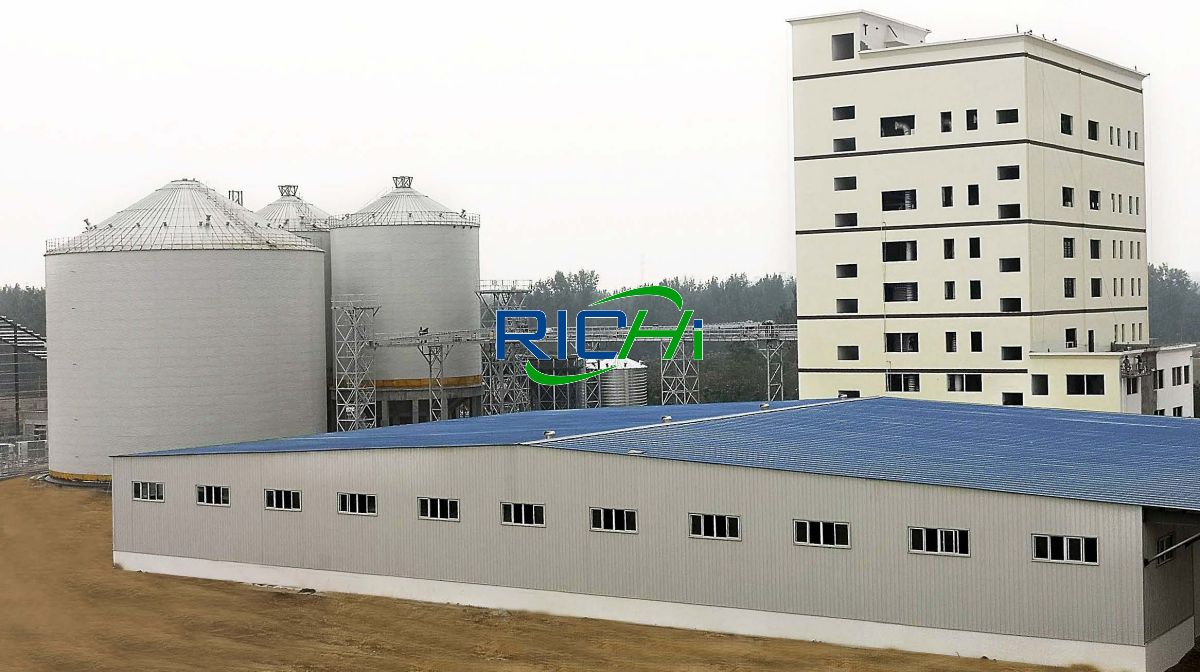
Animal feed producers, whether poultry, dairy, aqua or even swine operate in highly competitive environments. Efficiency savings across the supply chain can yield great results from a relatively low investment. One area often ripe for improvement is in feed mills, where adjusting operations, settings or processes can yield huge savings. By finding ways to get more from existing equipment, improving staff knowledge and minimising wastage, feed mills can often gain efficiencies and save cost.
Here, RICHI will give you 5 key areas feed manufacturers should look at to ensure their feed mills are working profitably, productively and sustainably.
(1)Optimizing the feed mill production processes
There are often gains to be made by improving batching processes–whether that's weighing out raw materials, or timings of wet and dry mix applications. First look at individual processes within a mill, measure performance and then try to build some efficiencies into that feed mill process. It’s important to periodically look at your batching system, how you weigh out raw materials, and finding gain time between each batch, and timings of wet mix and dry mix applications - there are often ways you can save either time or cost by working more efficiently.
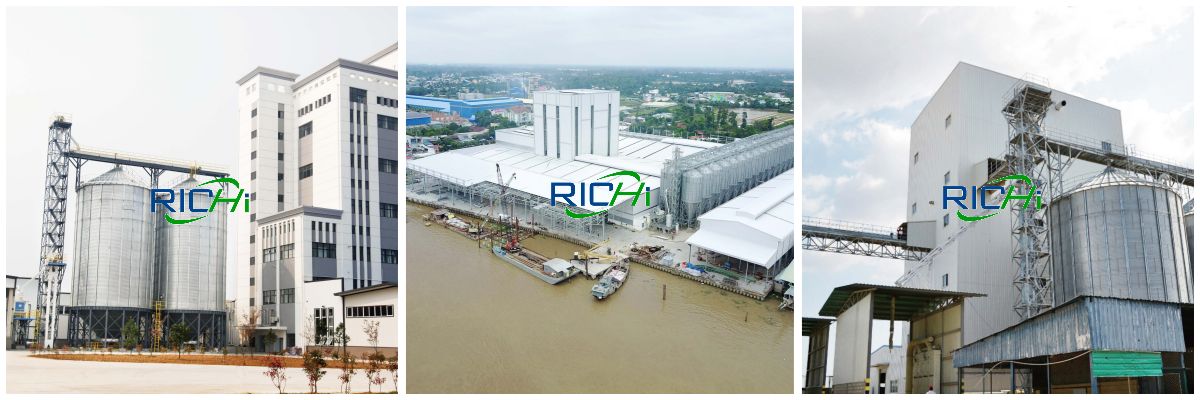
Pelleting, too, can benefit from outside scrutiny. Look at the process and current running parameters, monitoring the steam system and conditioning processes. Each feed formulation requires different tweaking–manipulating settings to get feed to gelatinise effectively before the pelleting process is key to improve efficiencies.
There are often gains to be made by improving feed mill batching processes–whether that's weighing out raw materials, or timings of wet and dry mix applications.
(2)Reducing feed mill energy consumption
Costs are rising, and there is increasing scrutiny on businesses' carbon footprint makes the need to use energy as efficiently as possible–reducing waste is an important part of this drive for efficiency.
Look at the moisture within conditioned feed, and based on the levels of conditioning and gelatinisation; we can then introduce methods to improve energy consumption. In terms of waste, we look at how much product has been returned to pre-processing bins and try to reduce the amounts returned for reprocessing. It's based on mechanical know-how and steam know-how.
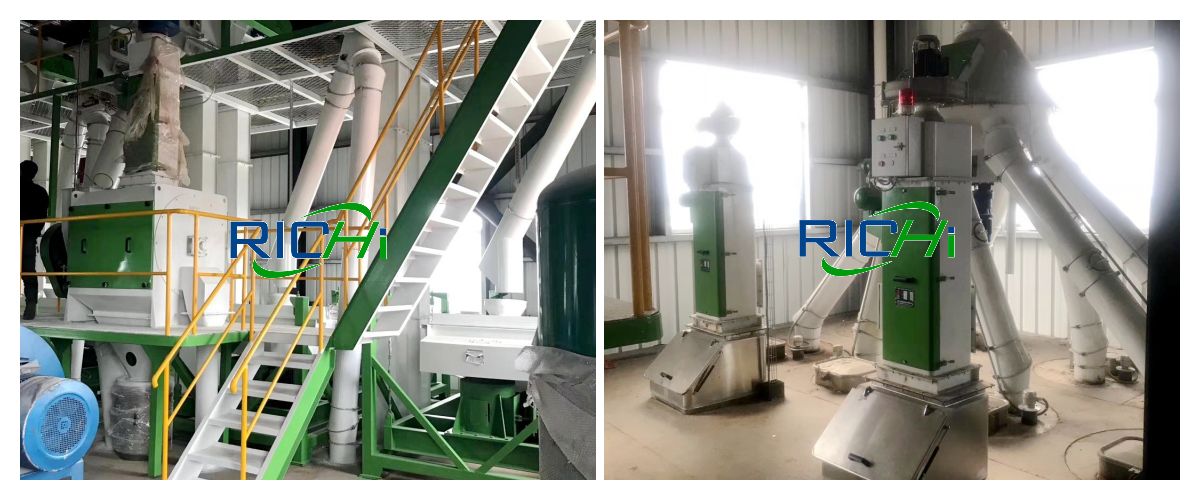
(3)Securing feed hygiene for cow feed mill
The livestock industry has had to deal with several recent epidemics and biosecurity continues to be a focus of processors and consumers alike, and with good reason. Anti-microbial resistance, African Swine Fever and Avian Influenza are yet to be overcome–despite best efforts.
In a feed mill setting, you would begin by looking at the CFU levels of stored raw materials and then measuring the finished product, and again three-to-seven days later. Look at measures of how to improve the sanitisation of the entire mill process and transport to ensure feed is free of any nasties. Another part of this work is validating products which are used by feed mills to improve hygiene, such as those designed to reduce CFU levels and to ensure salmonella free feed, proving their efficacy through these trials.
(4)Feed mill moisture management
A usual range for moisture loss in the feed process is between 1-1.5%, and animal feed mills should be challenging and reviewing their losses from season to season. This is a topic always under scrutiny. Find ways to reduce the amount of moisture loss within the feed processes by adjusting setting–each mill is unique, and we would have to survey it first to find ways of improving moisture management.
In addition to reducing moisture loss through adjusting machinery, it is also possible to add moisture management products, or use an in-line sensor to monitor levels. Ensuring those products are working efficiently is crucial for ongoing testing and refining.
The cooling process is another aspect where you can lose moisture–so it's essential to review this process, as well.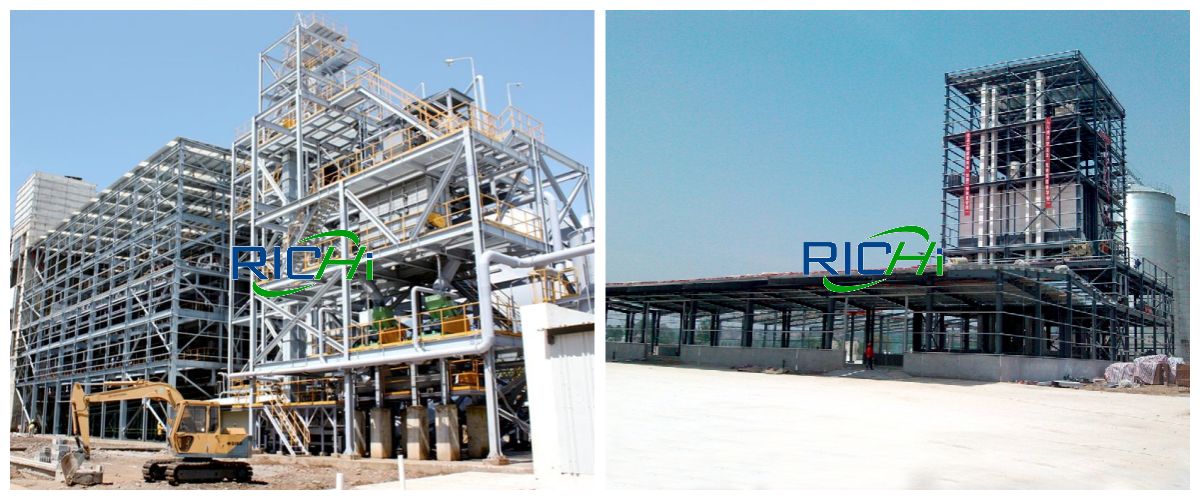
(5)Feed mill personnel training
An essential part of an efficient mill is having confident, well-trained staff. Quite often, A lot of people come into the industry and might not understand how systems work. We often find knowledge has been handed down and thinned in the process, and there’s a lot of historical settings that might not match current best practice, machinery or formulations. Part of what we do is offer hands-on training on the mill floor to give people the confidence to make decisions with equipment.
Although training in a classroom environment does add value, I believe that mill personnel gain unsurpassed benefits from practising rather than reading. No matter what you do to your process, or what feed mill equipment you use, it is important to challenge your processes to extract optimum feed mill plant performance thus achieving tangible savings for the business and its supply chain.
Small 1t/h cattle feed pellet production line unit is the abbreviation of artificial batching type small feed unit, usually the output is not more than 5 tons. It adopts building block modular design, which is convenient for disassembly, transportation and installation; it has low investment, quick results, compact structure, small floor space, low plant requirements, and low capital investment. It can also be designed according to needs. Especially suitable for small-scale feed factories and breeding farms.
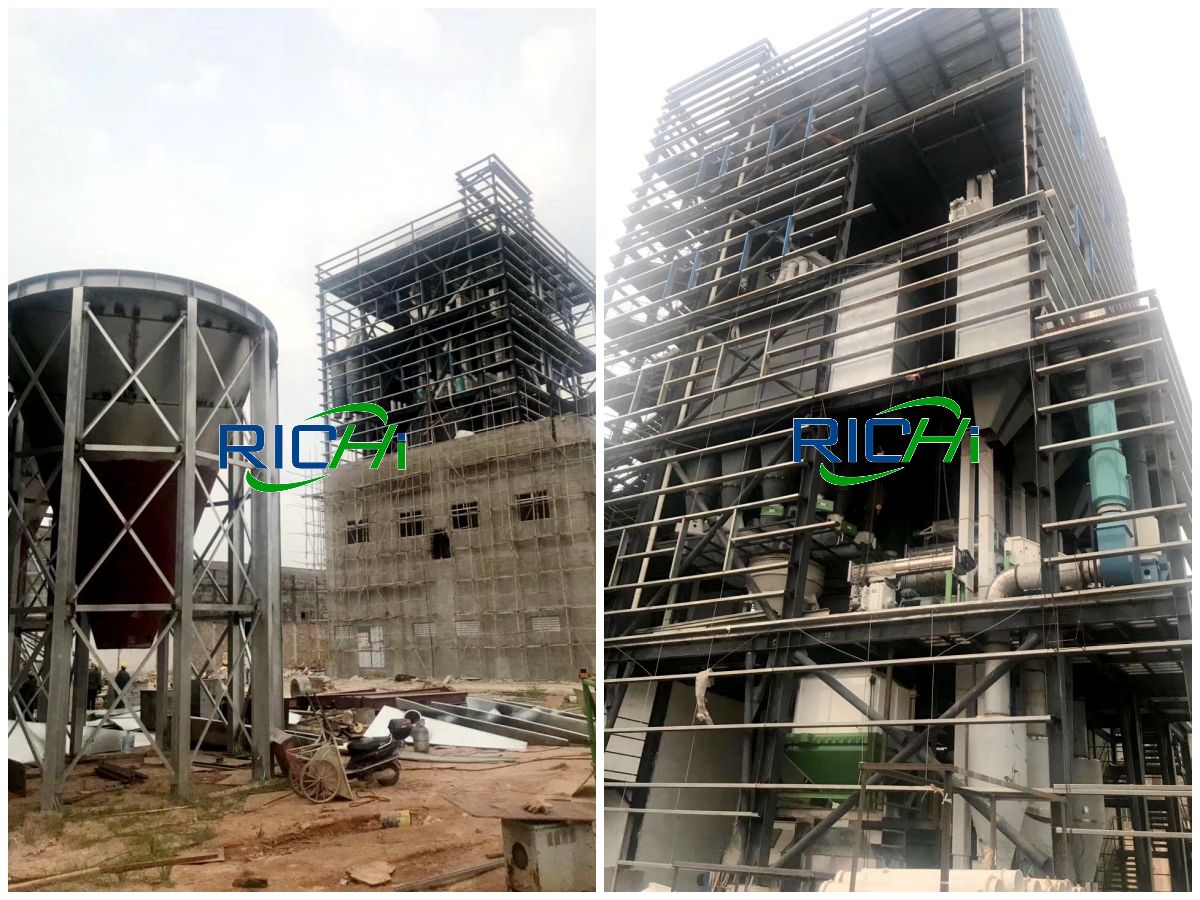
Main Equipment List Of 1TPH Cattle Feed Mill:
| Feed mill machinery | Model | QTY |
|---|---|---|
| Cattle feed grinder | SFSP.56*40 | 1 Set |
| Cattle feed mixer | SLHY.1 | 1 Set |
| Cattle feed pellet machine | SZLH250 | 1 Set |
| MCC Control Center; Mimic Control Panel | / | 1 Set |
| Auxiliary equipment: crew conveyor*TLSS20, Iron removing device*Z-Type, Bucket Elevator*TDTG36/18, Cyclone*SK600, Pulse dust collector*TBLMa.8B, etc. | ||
| Note: Different customers, different needs, different customized feed mill solutions, and different feed mill equipment configurations. | ||
An organic feed mill is a factory that produces organic feed. So what is organic feed? Organic feed is a feed product that is produced by an organic production system using organic feed materials in accordance with relevant organic feed standards.
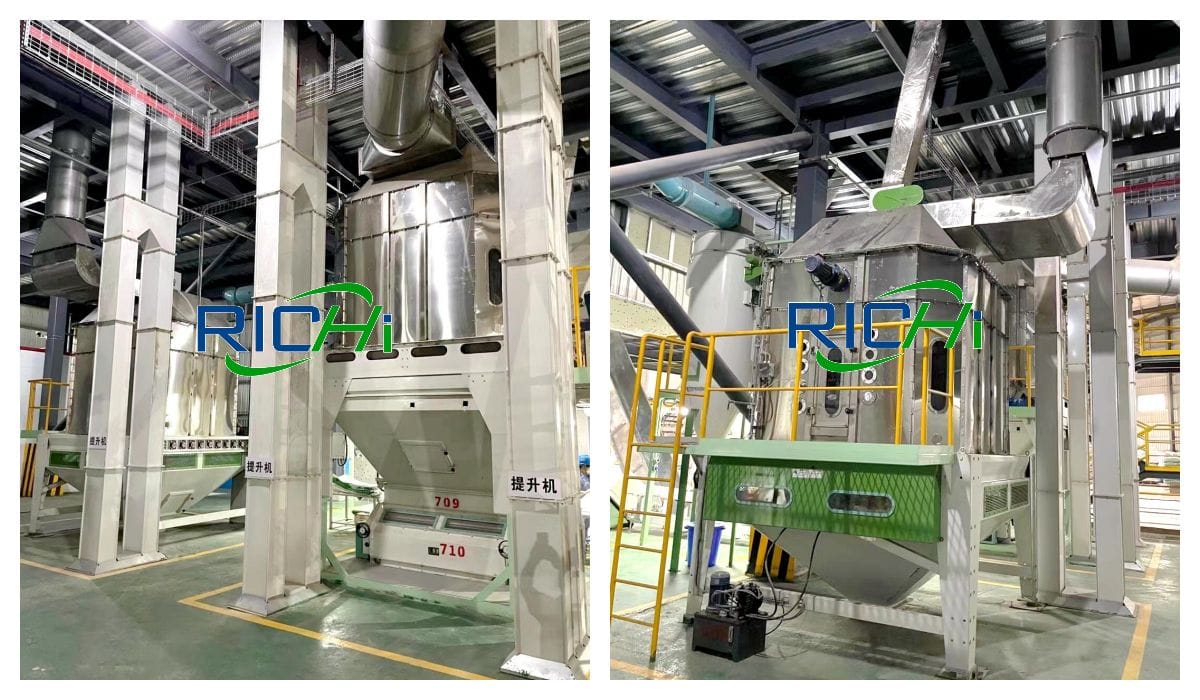
Chemically synthesized drugs, growth promoters and other chemically synthesized additives are not allowed in the product, and products obtained by genetic engineering technology, such as genetically modified soybean meal, cottonseed meal, etc., are not allowed to be used in the product. The product quality is tested to meet the requirements of the organic feed standard. It is also certified to allow the use of organic product marks on product packaging.
The requirements for this type of product are higher than that of green feed. Only the feed that meets the above conditions or meets the above requirements can be called organic feed, otherwise it is not organic feed.
With the continuous development of the breeding industry, many professional breeding households and professional villages have appeared in rural areas, which has increased the demand for feed. Many feed mills are farm-based, some just provide feed for their own farms, and some will produce part of it for sale. So here we will talk about how to set up an on farm feed mill.
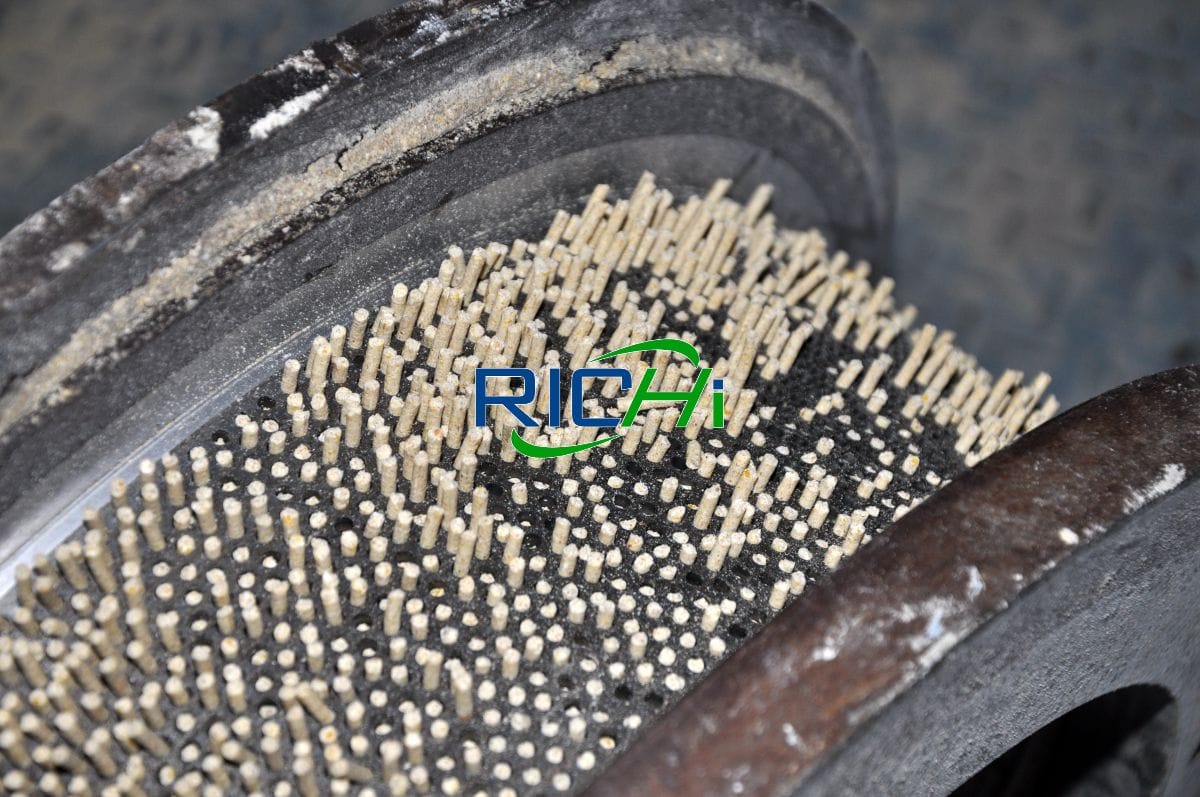
(1) Conduct feasibility analysis
Establishing small farm use feed mill plants in rural areas first requires thorough and detailed investigations, and on this basis, conduct economic analysis and technical demonstrations. Only when the breeding industry needs it, the economic benefits are good, the advanced feed processing and compounding technology is mastered, and the local spirit of "comprehensive planning, overall arrangement, local conditions, and reasonable layout" can be invested and built.
(2) Scientifically determine the scale of plant construction
The scale of production is the basis for the design of the feed processing plant. The scale of production should be determined according to the demand for feed in the supply area. The daily feed demand can generally be calculated based on 0.15 kg per day for laying hens and 1.75 kg per day for pigs. Then, the annual feed demand is calculated based on the total number of livestock and poultry raised in the supply area to determine the construction The production scale of the factory. For example, a single-shift equipment with an annual output of 1,000 tons can raise 20,000 laying hens or 1,500 pigs.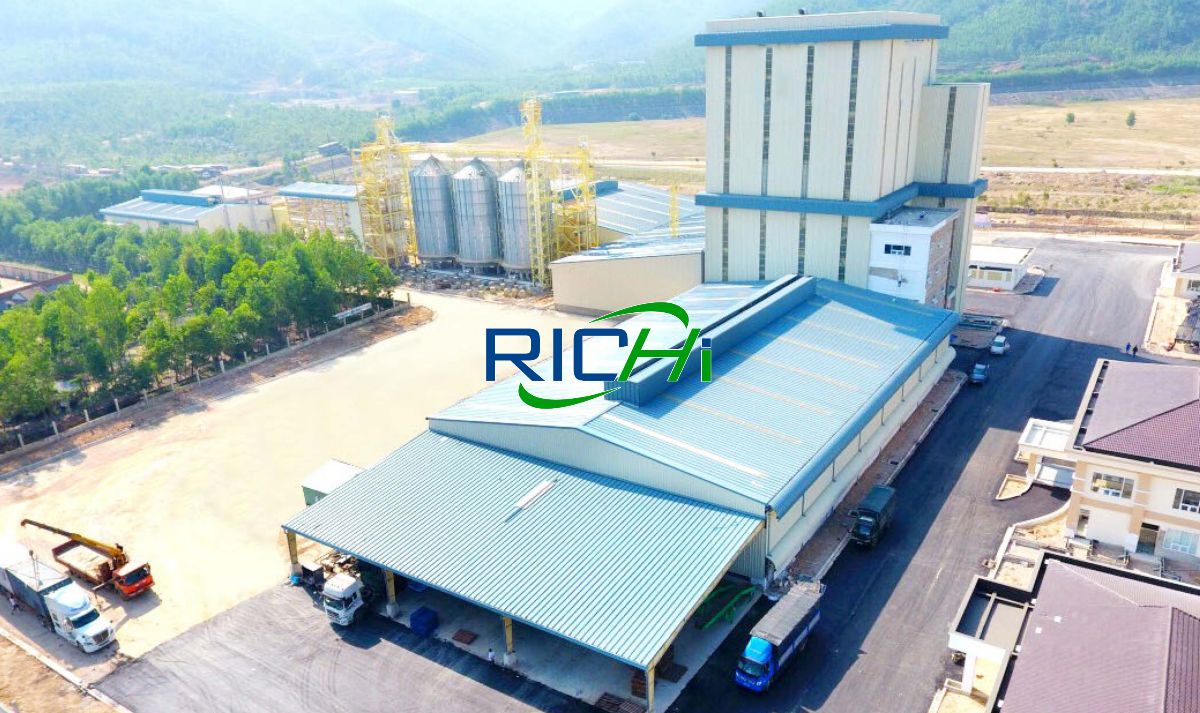
According to the local power supply situation, it should first be determined whether it is one-shift production or two-shift production. For example, for a compound feed factory with an annual output of 4,000 tons, if it is produced in one shift, only equipment with a productivity of 2 tons/hour is required, and if it is produced in two shifts, only equipment with a productivity of 1 ton/hour is selected. In order to give full play to the production capacity of the equipment. To improve economic efficiency, in the case of guaranteed power, it is generally appropriate to use two-shift production.
In addition, the annual time base of the equipment is currently prevailing: if the equipment productivity is 1 ton/hour, the annual production capacity is 2,000 tons. This is a one-shift production, and the equipment's annual time base is based on 2,000 hours. Therefore, according to the production capacity of the equipment and further considering the development plan of the local aquaculture industry or the current breeding scale, the tonnage of the equipment can be selected according to local conditions, thereby scientifically determining the scale of the on farm feed mill.
(3)Choose the site correctly
The feed mill factory site should follow the principle of “processing nearby” and prioritize construction in towns with sufficient feed resources, developed animal husbandry, convenient transportation, guaranteed electricity, and markets, or villages with a certain scale of professional breeding households. If the feed factory is built near the grain depot, or integrated with the grain depot, the housing facilities and corresponding costs for raw grain storage can be omitted.
Feed mill plants for farm should not be built in toxic, harmful, pathogenic gas or dust-contaminated places, and should not be built near or out of the limelight in livestock and poultry farms, pesticide plants, and sewage treatment plants.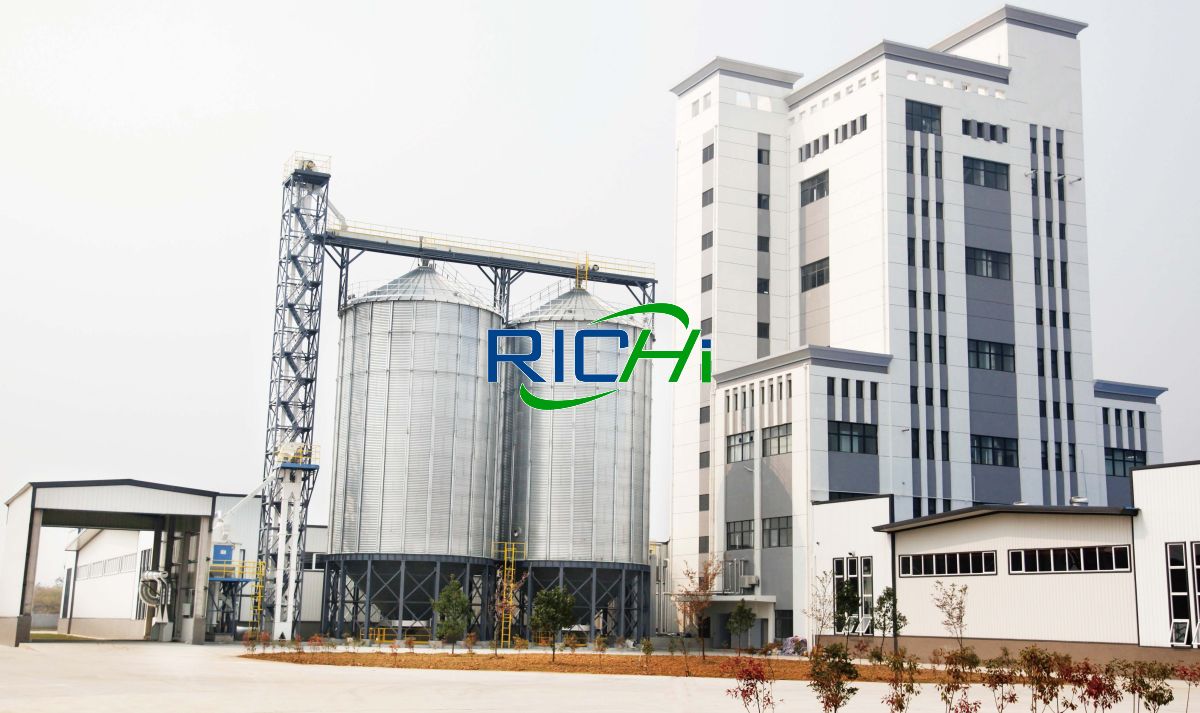
(4)Carefully select equipment
Before the establishment of the plant, the corresponding complete set of feed processing equipment should be selected according to the determined production scale. The following issues should be considered when choosing:
①Selection of unit process flow
Whether the process flow selection of the feed mill unit is reasonable or not is closely related to the investment, energy consumption, use and maintenance convenience of equipment and workshops. For small-scale feed processing plants in rural areas, the equipment strives to be simple, which requires reasonable, simple and applicable process selection.
In rural areas, the following three forms are generally appropriate.
②Selection of unit measurement form
There are two types of measurement: volumetric measurement and gravimetric measurement. The advantage of volumetric metering is that it saves labor, but it is not easy to change the formula; the weight metering accuracy is higher, and it is more convenient to change the formula. Therefore, it is more accurate and convenient to measure by manual weighing in general small-scale feed mills for farm.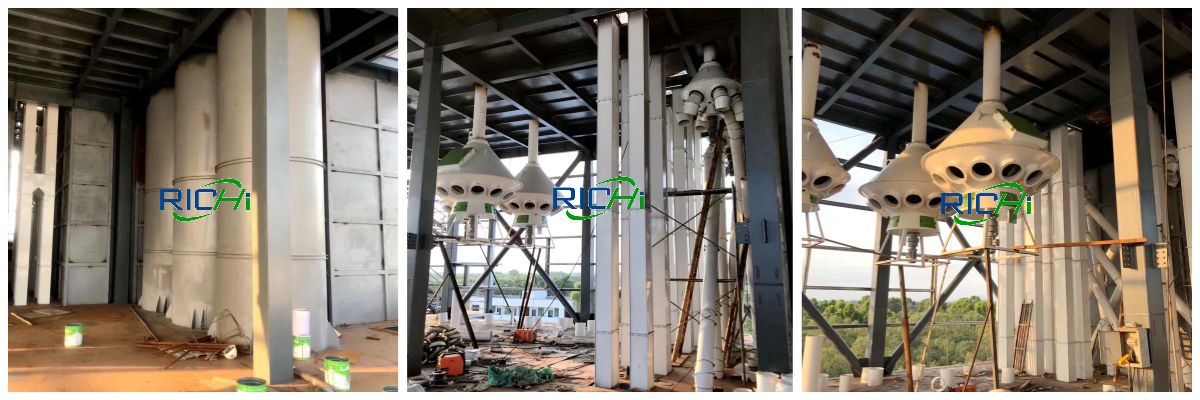
③Choice of feed mill unit
The unit suitable for rural feed mill plants should have the following characteristics:
In summary, for farm use feed mill units with the same productivity, technical and economic indicators should be compared in terms of installed capacity, batching measurement method, power consumption, equipment selling price, required plant area, etc., and a comprehensive analysis should be carried out to select them. The required unit. Some feed factory providers will say that to build small feed processing plants in rural areas, a complete set of equipment with a productivity of 400 kg to 1,000 kg/hour should be selected. In fact, the production scale of many of our large farm customers has reached 10t/h. Very impressively speaking, we still recommend a specific analysis of specific situations, and everything is based on actual needs.
The 3tph cattle feed pellet production line unit uses manual weighing ingredients. The raw materials need to be pre-weighed, and then fed into the production line from two different feeding ports. The raw materials that need to be crushed are fed from the pellet feeding port to the crusher in batches. The feed crusher uses the primary cleaning screen to feed the feed. The powder to be crushed is pre-weighed and enters the production line from the powder feeding port, and then is mixed by the mixer.
The mixed material can directly enter the finished product warehouse as a powder product, or enter the granulation section for granulation cooling processing , And finally use manual weighing and packing. The total equipment power of the unit is about 131KW; the size of the unit is about 12×6×11m; it needs to be equipped with a 0.3T boiler. The whole unit adopts a spliced frame, with compact design, reasonable structure, meeting environmental protection requirements, and directional design according to customer requirements.
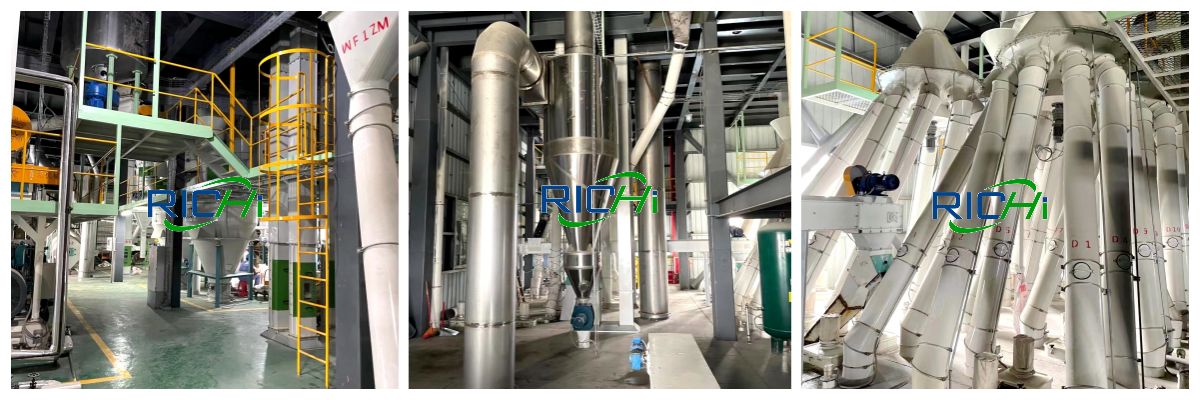
3TPH Cattle Feed Mill Equipment:
| Feed mill machinery | Model | QTY |
|---|---|---|
| Cattle feed grinding machine | SFSP56*60 | 1 Set |
| Cattle feed mixing machine | SLHY.1 | 1 Set |
| Cattle feed pellet machine | SZLH320 | 1 Set |
| MCC Control Center; Mimic Control Panel | / | 1 Set |
| Auxiliary equipment: crew conveyor*TLSS20, Iron removing device*Z-Type, Bucket Elevator*TDTG36/18, Cyclone*SK600, Pulse dust collector*TBLMa.12A, etc. | ||
| Note: Different customers, different needs, different customized feed mill solutions, and different feed mill equipment configurations. | ||
(Take one of our projects in China as an example)
(1)20T/H cattle feed plant feasibility study
About feed mill suitability, this project is in line with national industrial policies and local government industrial planning. It realizes a one-stop agricultural product processing, production, and sales. A large-scale cattle breeding base led by customers. The establishment of a feed mill plant for cattle can reduce feed prices according to their own breeding varieties.
The production of high-quality feed can ensure the quality of commercial pigs, make it convenient for poor households to raise cattles, and can digest corn, wheat, soybeans and other crops grown by local farmers, and increase farmers' income. Quality feed mills produce feeds at low prices to farmers, make the cattle feed company, farmers and breeders form a three-way profitable development.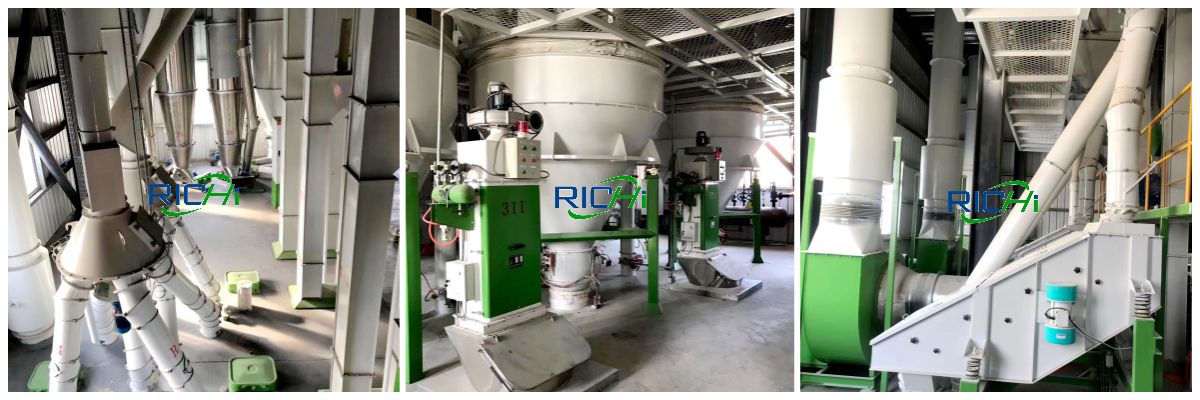
The corn, soybeans, wheat and other crops grown by local farmers can completely solve the feed materials needed for production, and the products are mainly cattle feeds at different growth stages. The project is designed to produce 40,000 tons of feed per year, and there is no problem in sales. The feed processing project is equipped with dust collection equipment, which does not pollute the environment.
The implementation of this 20tph cattle feed mill company project, driven by the customer feed company, has driven a large number of poor households to develop cattle breeding, and at the same time, it is driven by seed supply, material supply, technical services and sales. It is a strong driving project and promotes the local cattle industry. It plays a certain leading role in providing farmers' income with the development of chemistry.
(2)20T/H cattle feed factory design construction
The 20t/h cattle feed making plant construction scale is an annual output of 40,000 tons of cattle feed, and the total investment is about 8 million yuan. The specific construction content:
(3)20T/H cattle feed production plant layout design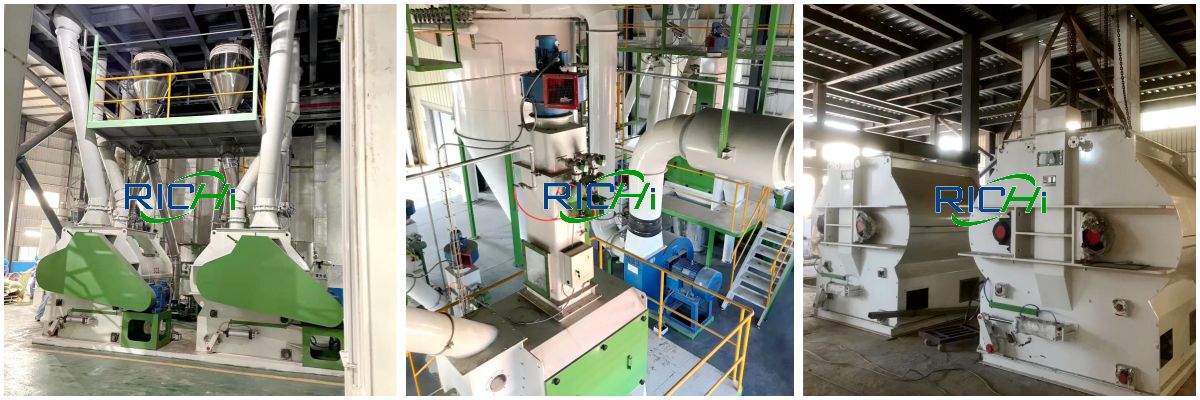
(4)20T/H cattle feed equipments configuration
| Serial number | Cattle feed equipment | Model | QTY |
|---|---|---|---|
| 1 | High-efficiency cattle feed mixer | Volume: 1000KG/time, uniformity ≤7% | 2 |
| 2 | Cattle feed grinder machine | TDSDFS110 | 2 |
| 3 | Bucket elevator | TDTG61/29 | 2 |
| 4 | Batching scale | Weighing range 0-1000KG±1KG | 1 |
| 5 | Pellet cooler | / | 1 |
| 6 | Cattle feed pelletizer machine | Production capacity 12/h | 2 |
| 7 | Dust collector | Handling air volume 4500-6450m3/h, filtering area 25m2 | 5 |
| 8 | Cylindrical cleaning screener | / | 1 |
| 9 | Gas steam boiler | 2t/h | 1 |
(5)Benefit Analysis
The 20t/h cattle feed plant adheres to the principle of preserving low profits and giving benefits to poor households. Each ton of feed will be used to benefit farmers 100 yuan, and the enterprise will have a low profit of 50 yuan per ton. The project construction scale will produce 40,000 tons of feed per year, which can benefit farmers 4 million yuan. The annual profit is 2 million yuan, and the total profit is 6 million yuan. At the same time, 30 farmers will be employed.
About commercial feed mill quality assurance program or commercial feed mill quality control, this is a very broad question, because there are too many details to say. Today, RICHI is here to discuss several common quality control in the feed mill production process which links with you.
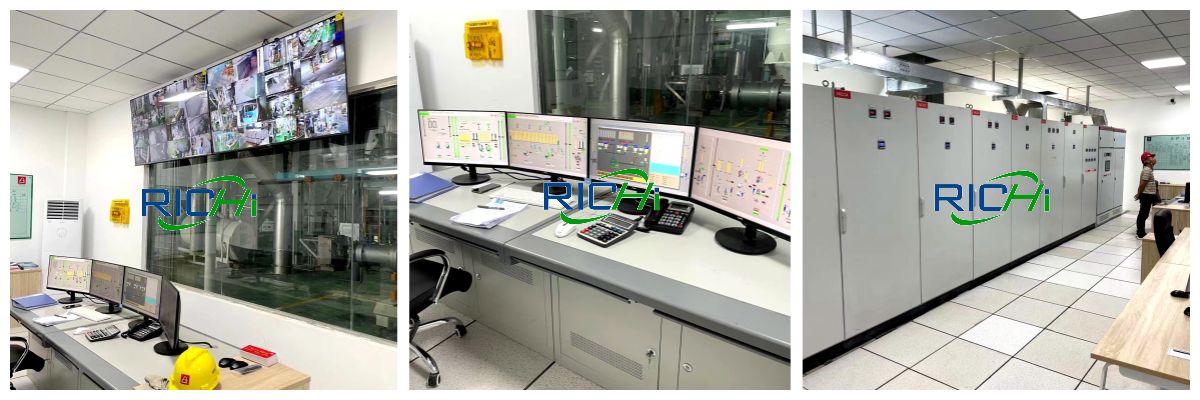
(1) Control of crushing particle size
The key to this technology is to pulverize various feed materials to the most suitable particle size for animal use, so that the compound feed product can obtain the best feeding efficiency and economic benefits. To achieve this goal, it is necessary to in-depth study and grasp the best utilization of different animal feed materials for different particle sizes. For aquatic feed, micro-pulverization and ultra-fine pulverization technology must be used.
(2) Control of the accuracy of ingredients
Using error-free computer batching control technology, the batching amount of each batching component can be accurately controlled in each batching. Micro additives can be pre-mixed and pre-mixed and use high-precision micro-dosing system.
(3) Feed mill mixing uniformity control
This includes the mixing uniformity control technology of compound feed, concentrated feed, additive pre-mixed feed, and liquid feed. Choosing the proper mixer and proper mixing time and method is the key to ensuring the mixing quality.
(4) Feed mill granulation quality control
In this respect, the first thing is to control the quality of the feed, that is, to control the temperature, time, water addition and starch gelatinization degree of the tempering, so that the tempered state is most suitable for pelleting; the second is to control the powdering of hard pellets. Rate, cooling temperature and moisture, uniformity, consistency, and water resistance of particles.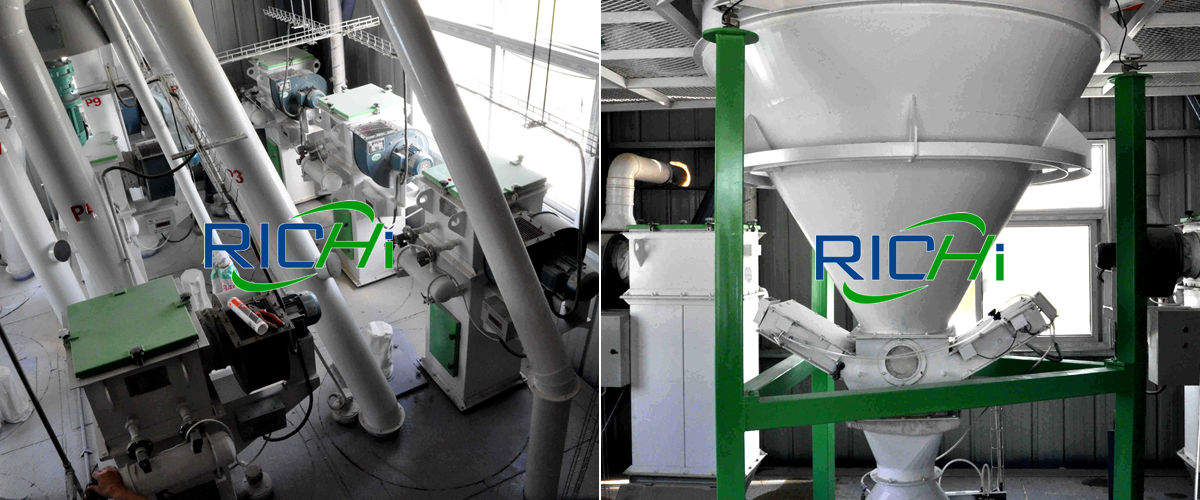
To achieve these requirements, a reasonable steam supply and control system and conditioning, granulation, cooling, and screening equipment must be equipped, and the control parameters must be scientifically adjusted according to the different requirements of the product.
(5)Feed mill conditioning quality control
The quality control of extruded pellet feed or expanded feed is first to control the quality of the feed, that is, control the tempering temperature, time, water addition and starch gelatinization degree, so that the tempered state is most suitable for extrusion Puffing or expansion; secondly, it is necessary to control the maturation, density, powdering rate, cooling temperature and moisture, uniformity, consistency and water resistance of the extruded pellet feed.
To achieve these requirements, a reasonable steam supply and control system, conditioning, extrusion, expansion, drying, cooling, and screening equipment must be equipped, and the control parameters must be scientifically adjusted according to the different requirements of the product to obtain the product that customers are satisfied with.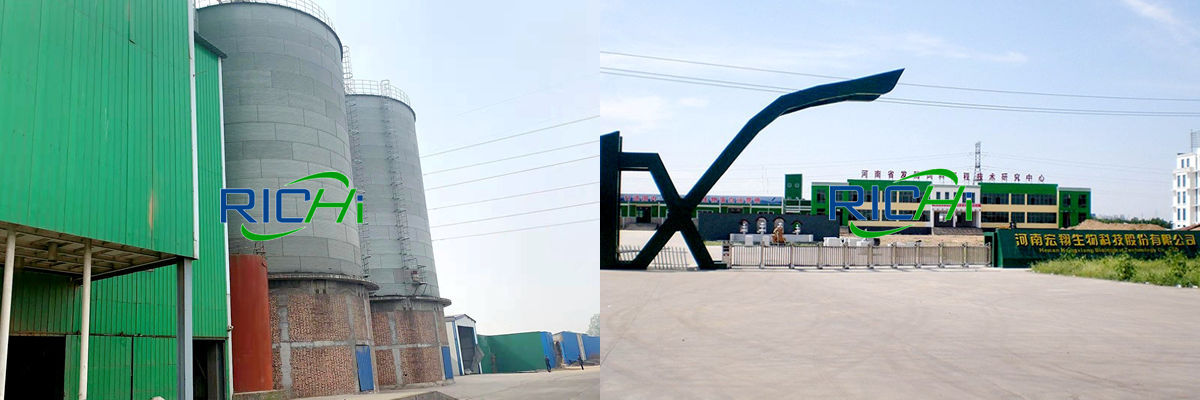
(6) Quality control of liquid addition
With the continuous development of cattle feed mill technology, many additives will be added to powder, granular and extruded feed in liquid form, and the activity of these additives will be retained to the greatest extent to reduce feed costs. One is to realize the precise control of the amount of liquid added, the other is to realize the uniform distribution or coating of the liquid in the feed, and the third is to ensure the stability and validity period of the liquid additive after spraying. This requires the use of high-performance atmospheric liquid spraying equipment, vacuum spraying equipment and control technology.
(7) Control of feed cross-contamination
The main places where feed cross-contamination occurs are: leakage and mixing during storage; cross-contamination between different products caused by residues in transportation equipment; cross-contamination caused by residues in silos and buffer hoppers ; Cross-contamination caused by residues in processing equipment; cross-contamination caused by harmful microorganisms, insects, etc.
Therefore, it is necessary to adopt residue-free transportation equipment, silos, commercial feed mill equipment, correct cleaning, sorting, washing and other technologies and independent production lines to meet the ever-increasing feed safety and sanitation requirements.
(8) Quality control of clean and sanitary feed
The control technology in this area includes cross-contamination control technology, as well as the necessary heat treatment and sterilization technology for feed. Heat treatment includes high-temperature cooking, extrusion, high-pressure treatment, ultraviolet radiation and other process technologies. These technologies can usually be used in combination with ordinary processing technologies, or they can be implemented separately.

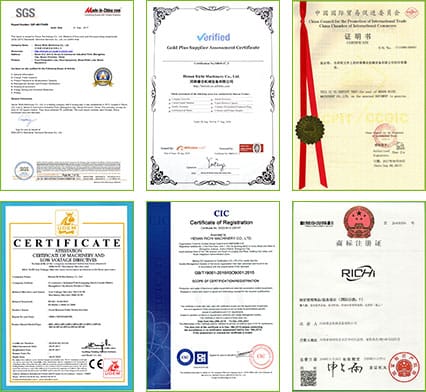
Introduction of RICHI
Strength certification
Richi Machinery is a professional manufacturing enterprise integrating scientific research and development, manufacturing, sales and service. We have developed and manufactured multifunctional pelletizers, grinders, mixers, dryers and more than ten categories and more than 30 models of complete machine products are widely used in feed, biomass, organic fertilizer, pet supplies, solid waste recycling, chemical industry, road construction and other fields. All RICHI products have passed ISO9001:2008 international quality system certification, EU CE certification and Customs Union CU-TR certification, successfully serving more than 2,000 customers in more than 100 countries and regions around the world.
Get Price & ServiceIn RICHI, every equipment and every pellet production line business plant can be customized. We will formulate multiple sets of pellet production process plans for comparative analysis according to the actual needs of customers, select a reasonable plan, and realize private customization. Our services run through all aspects of on-site terrain and environment survey, production line process design, raw material testing, cost requirement analysis, project investment budget, equipment installation and commissioning.
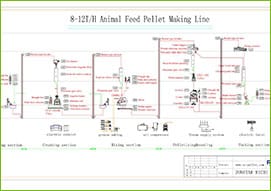
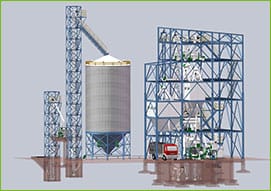
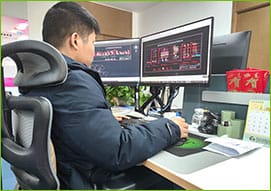
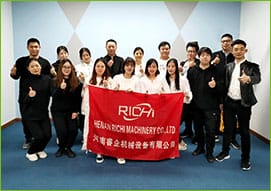
Quality Control
Richi Machinery
We adhere to the ISO9001 quality management system, and strictly implement international standards for product design and manufacturing processes. In terms of management systems, there are product quality accountability systems, product quality accountability systems, and safety production management systems; in terms of management tools, QC quality control management, SPC statistical process control, sampling inspection and measurement system analysis are used for quality control, to achieve effective control of the entire process of equipment production, and never let go of any quality hidden dangers that may affect customer operations.
Get Price & Service
RICHI has always been adhering to the spirit of craftsmanship to make every detail good, especially in the link of equipment preparation and delivery, we follow the standardized process: preparation order check-equipment factory quality inspection-packing list re-inspection-scientific packaging and transportation, ensure the safe and non-destructive delivery of equipment. According to customer needs, RICHI installation engineers will guide the construction of site infrastructure, equipment installation and commissioning and trial operation of the entire production line throughout the process. When the relevant project indicators reach the design standards, the client will carry out the project acceptance.
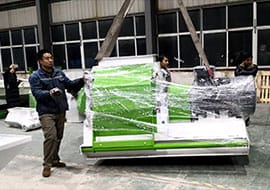
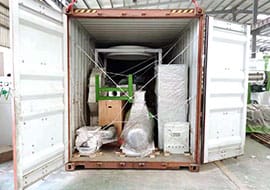
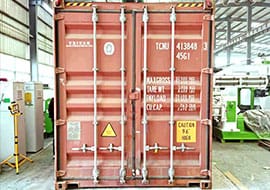
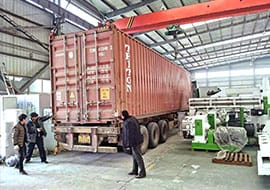
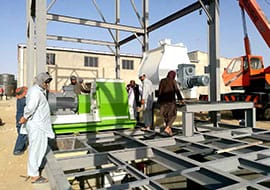
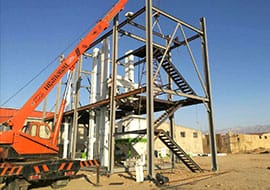
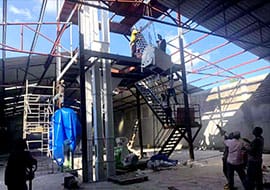
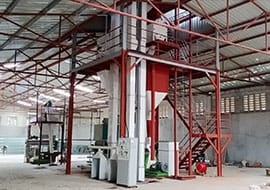
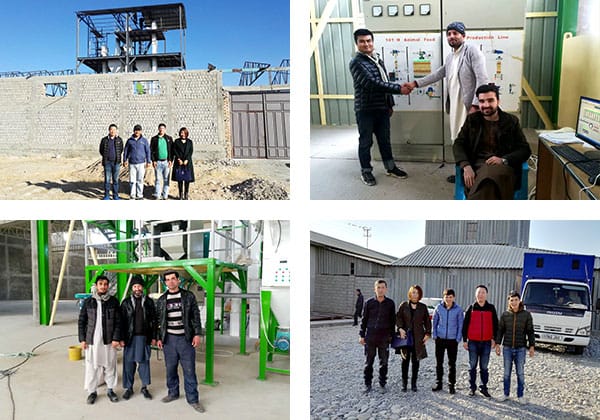
After-sales And Training
Richi Machinery
We have built a team of nearly 100 technical engineers to solve a series of problems in the project from consultation, site survey, sample analysis to plan design, installation and commissioning, and maintenance. We provide comprehensive and systematic training for the technical staff of each customer to better serve the customer's project needs. After the technicians have finished their studies, RICHI will provide follow-up technical support services, and the training engineers will follow up the project use effects in the later stage to ensure the stable operation of the customer's project.
Get Price & Service